Japan has long been a top tourist destination, thanks to its unique and inspiring culture and food. If you’re travelling to Japan for the first time, you’ll want to see as much of the country as you can. Three weeks is the perfect amount of time – we spent 21 days exploring Tokyo, Kyoto, Osaka, Okinawa’s tropical beaches and more. This comprehensive guide covers our complete route, transportation tips and recommendations to help you plan the ultimate 3 week Japan itinerary.
This post contains affiliate links. This means, if you make a purchase, I may receive a small commission. As an Amazon Associate I earn from qualifying purchases. For more information, read my disclaimer.
Quick overview of the best Japan 3 week itinerary
- Days 1-4: Tokyo
- Days 5-8: Okinawa
- Days 9-10: Nagasaki
- Days 11-13: Hiroshima & Miyajima Island
- Days 14-15: Osaka
- Days 16-18: Kyoto
- Days 19-21: Tokyo & Mount Fuji
Our story
While travelling through Malaysia with my boyfriend a few years ago, we met a young Japanese couple. When we asked them for their Japan itinerary tips, they sketched a map with the best places to go in Japan. As you can see from the map, their recommendations ranged from Niigata in the north down to Okinawa.
Years later, we finally did it. We planned 3 weeks in Japan from mid-April to May. Even with three weeks, sadly we couldn’t do everything they’d suggested. We had to make the choice between heading north or south from Tokyo, because we couldn’t fit everything in. In the end, we chose to head south, including to Okinawa, and leave northern Japan for another time.
Check out Lonely Planet’s essential Japan guide book to help you plan your trip.
This is the ultimate Japan 3 week itinerary
After months of planning and 21 incredible days in Japan, here’s exactly how we spent our time. This itinerary balances must-see highlights with hidden gems, giving you enough time to truly experience each destination.
Tokyo – Days 1-4
Many international travellers like us will fly into Tokyo, so it’s the perfect starting point for your Japan adventure. With four days in Tokyo, you’ll have time to experience the famous attractions and discover places by yourself, like the peaceful Hie Shrine we stumbled upon. It’s good to spend a few days in Tokyo. This is because the city takes longer to travel around than you may think.
Day 1: Arrival in Tokyo
If you land at Tokyo’s Haneda airport, like us, make sure you head to the Air BicCamera store on the third floor of arrivals. Here you can buy a B-Mobile 21 Days Visitor SIM card. It will mean you can access mobile internet whenever you need, but keep in mind it doesn’t allow you to make calls.
Haneda airport is 10 miles (16 km) from Tokyo city centre, whilst Narita is 40 miles (64 km) away. We took a taxi from Haneda. We liked how clean the taxis were, their automatic doors and lace seat covers. Make sure you have your accommodation address printed in Japanese kanji characters, as some drivers won’t understand addresses written in English.
Limousine shuttle buses are a comfortable, cost-effective option between the airports and Tokyo areas. We used these for the rest of our trip. Ask at the airport information desk for routes and timetables.
Book a private transfer from Haneda airport to your Tokyo accommodation in advance here.
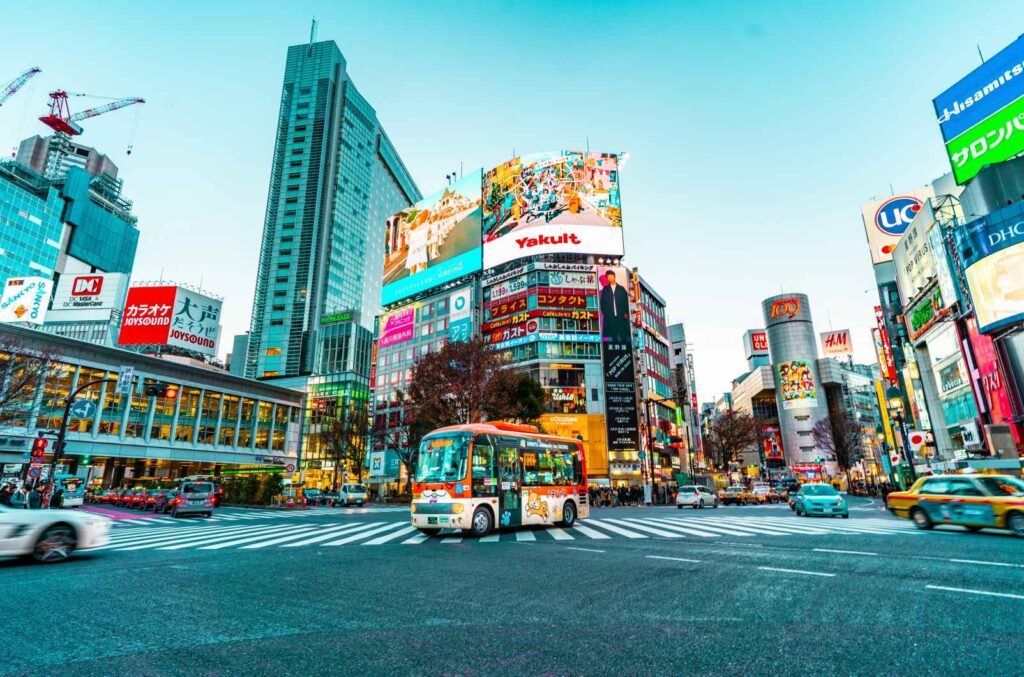
Where to stay in Tokyo
When choosing where to stay in Tokyo, transport links are absolutely crucial – this massive city can take hours to cross. Areas like Shibuya and Shinjuku are popular but can be overwhelming, whilst Ginza is great if you’re looking for luxury shopping and dining. We chose Akasaka because it has excellent metro connections to all the major attractions, plus it’s central without being touristy.
The best budget accommodation in Tokyo
Accommodation in Tokyo is relatively expensive and the rooms are smaller than usual Western hotel standards. Our favourite budget hotel in Tokyo was the fabulous Super Hotel Lohas Akasaka. It has friendly staff and is in an ideal location with a 7-11 supermarket right next door. The hotel even has its own dreamy onsen public bath, with specific times for men and women. Perfect after a long day of sightseeing.
If you’re looking for a hostel, the two UNPLAN hostels in Shinjuku are friendly, modern and have female-only as well as mixed dormitories. UNPLAN Kagurazaka has air-conditioned rooms and an on-site bar and cafe, while UNPLAN Shinjuku is conveniently located close to Shinjuku station and tourist attractions.
Find more great accommodation deals in Tokyo for your dates by exploring the map below:
Explore your area
Depending on your flight time and energy levels, you may have time to explore your local neighbourhood on your first evening.
On our first night in Akasaka, we discovered the peaceful Hie Shrine – known as Tokyo’s hidden shrine with numerous red torii gates marking its entrance. We saw local business people come here to pray and make offerings. It’s an oasis among the modern skyscrapers.
Read my full 5 day Tokyo itinerary in my dedicated post here.
For dinner, we ventured into one of Akasaka’s many local restaurants. Keep in mind that menus may not be in English and staff may not speak English either, so you might have to point at something and hope for the best! We were lucky that a friendly local guy at the next table gave us his recommendations of the best dishes.
A beautiful place for brunch is the Aoyama Flower Market teahouse. Located at the base of the Akasaka Business Tower, here you can have breakfast surrounded by stunning plants and flowers. Such a treat.
Book an authentic tuna cutting and sushi tasting experience in Akasaka here.
Getting around Tokyo
Tokyo’s transport system looks overwhelming but it’s incredibly efficient. Get an IC card (Suica or Pasmo) at any station – it works on all trains, metros, and buses.
Most journeys within central Tokyo take 20-45 minutes, though stations can be massive. Avoid rush hour (7-9am and 5-7pm) when the crowds are intense.
One pleasant surprise is how walkable Tokyo is between nearby attractions. We often walked between areas rather than taking multiple connections, which gave us a better feel for the neighbourhoods.
Buy a 24 hour, 48 hour or 72 hour Tokyo subway ticket in advance here.
Day 2: Tokyo Tower and Shibuya Crossing
Once you’ve settled in, the first full day of your 3 week Japan itinerary will be seeing two of Tokyo’s most iconic attractions.
One of the closest attractions to Akasaka is the famous Tokyo Tower. From the summit there are incredible views over the city. If it’s your birthday, they will give you free entry and a drink or snack.
Buy your tickets to Tokyo Tower in advance here.
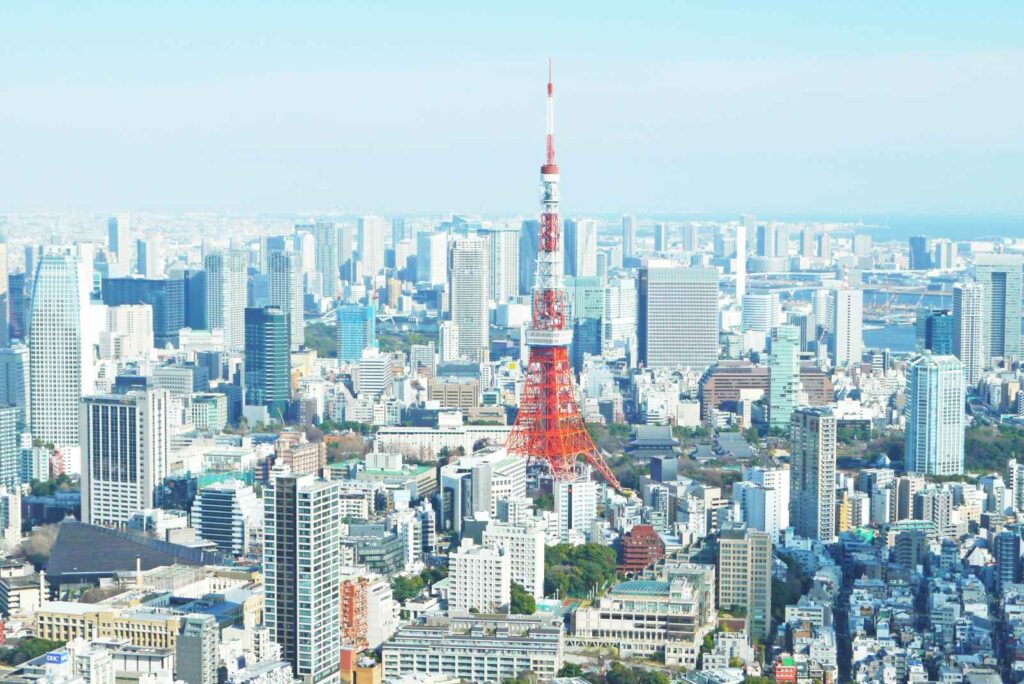
Not far from Tokyo Tower – and by that I mean only 30 minutes on the metro – is Shibuya. Here you will find great shopping and the famous Shibuya Crossing, said to be the world’s busiest intersection.
Many people go to the nearby Starbucks to photograph all the people scuttling across the road. Even though it’s only a pedestrian crossing, it’s a lot of fun, with people posing for shots along the way.
Nintendo fans can book a tour where you don a onesie and drive in a convoy of Mario Karts. We saw one of these groups go past in Shibuya.
Book your Shibuya street kart experience here.
Day 3: Akihabara anime and cat cafe
Following our Japanese friends’ recommendation, we visited Akihabara. Here, there’s a shopping hub full of electronics retailers, manga memorabilia shops and the Tokyo Anime Center.
This was one of my favourite areas of Tokyo as it’s so colourful and lively. It is 30 minutes north of Akasaka via the city’s metro system.
We stopped for a drink and a cuddle with the cats at the MoCHA cat cafe. You can buy treats to attract the cats to eat from your hand.
Cat lovers will adore this tour of Tokyo’s Cat Temple, giant 3D cat and Japan’s largest cat cafe – book it here.

Day 4: Historic temples and modern towers
In nearby Asakusa – 20 minutes away from Akasaka by public transport – you can visit Sensō-ji, Tokyo’s oldest temple. Amazingly, it dates back to the year 645. Be warned, it gets incredibly crowded here, as it’s one of Tokyo’s most popular tourist attractions.
Book a guided walking tour of Asakusa including Sensō-ji temple here.
Around 25 minutes east of Sensō-ji is a much smaller Shinto temple called the Kameido Tenjin Shrine. This is a perfect place to go if you’re visiting Japan in the spring.
During a few short weeks there is a special festival when the gardens bloom with hundreds of wisteria. They hang over a tranquil turtle pond with cute bridges, paths and wisteria tunnels you can walk through.
It was also crowded here when we came, but with more Japanese rather than international tourists.
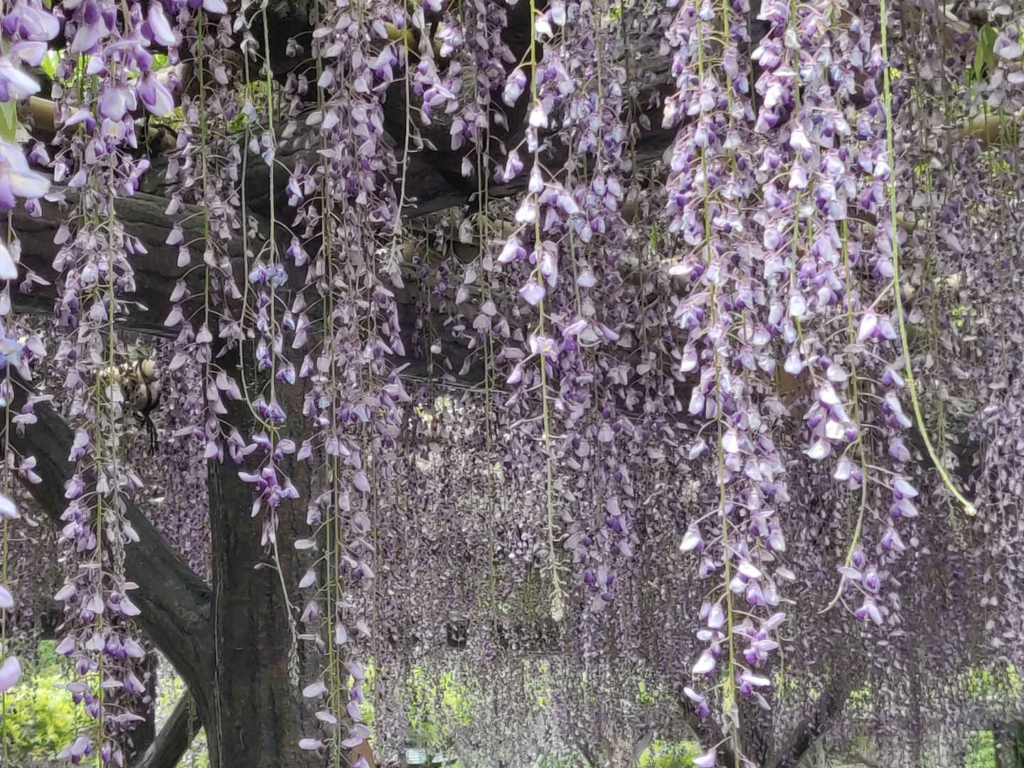
A 15 minute walk from this temple is another of the city’s famous towers, the Tokyo Skytree.
At 634 metres (over 2,000 feet) tall, it is hard to miss. In fact, it is one of the tallest towers in the world and there is a whole complex of restaurants inside.
When we visited, we found it to be too busy so we didn’t go to the top, but it was great to see from outside.
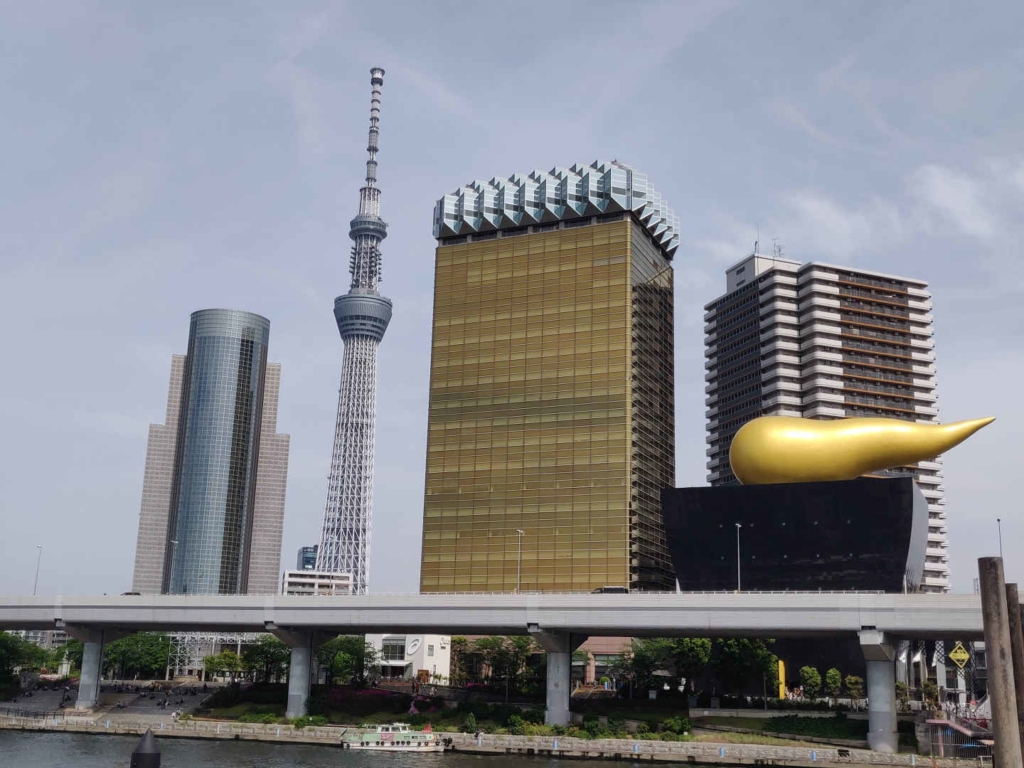
Okinawa – Days 5-8
The next destination in our 3 week Japan itinerary was Okinawa, as recommended by our Japanese friends. Known as Japan’s best-kept secret, they are located hundreds of miles south in the Pacific Ocean. The Okinawa islands have a subtropical climate, with average temperatures above 20°C all year round.
Day 5: Travel to Okinawa
We took a domestic ANA flight from Tokyo to Okinawa for the three hour journey. We then took a limousine shuttle bus from the airport in Naha to our accommodation.
Book a private transfer from Okinawa’s Naha airport to your accommodation here.
The best areas to stay in Okinawa
Popular areas to stay in Okinawa include Naha for city vibes and easy airport access, Onna for luxury beach resorts and stunning coastlines, and Nago in the north for a quieter, more traditional Okinawan experience away from the crowds.
We stayed on in Chatan, close to American Village. Okinawa has a large international cultural influence, notably that of the U.S., which has a large military base there. This colourfully-lit area feels like a mini-Vegas which is totally in contrast to the rest of Japan. It is full of restaurants, shops and entertainment venues with an American touch.
For the best accommodation deals in Chatan for your dates, explore the map below:
This is a fabulous hotel in Okinawa
Our hotel was the seafront Doubletree by Hilton Okinawa Chatan resort, a short walk from American Village. We splashed out for my birthday and it was well worth it.
The ocean-facing room had the most stunning sunset views – we spent hours on our balcony looking out over the coast. The rain shower was absolutely blissful after beach days.
Check the latest prices and availability for this fabulous hotel.
How to travel around Okinawa
Sadly, there isn’t yet a good public transport infrastructure in Okinawa. Taxis here are expensive, so the best way to travel around in Okinawa is to hire a car.
The fantastic staff at our hotel organised our Okinawa car rental so we could enjoy an Okinawa road trip.
In Japan, people drive on the left and the roads have a relatively low speed limit. For this reason, even with a car, we found it took longer than expected to visit places. However, in general the local drivers are calm and polite. This makes driving in Okinawa pleasant, even if you are not used to driving on the left.
Day 6: Ikei Island beach adventure
There are beautiful beaches in Okinawa with hardly a soul on them. One of the best is Oodomari beach on the remote Ikei Island. It can be reached by car – one hour from Chatan – thanks to a series of bridges from Okinawa island.
Whilst you’ll need to pay a small fee to the beach’s owners, often you can enjoy the area to yourself. The sea is ideal for swimming – clear, clean and full of fish. There are basic showers where you can wash off the sand afterwards.
For all the best things to do in Okinawa, check out my detailed Okinawa itinerary.
Day 7: Snorkelling or scuba diving experience
If you are feeling adventurous, there are many snorkelling and scuba-diving sites around Okinawa. The islands are surrounded by coral reefs. We headed towards the neighbouring island’s Kerama National Park on our Okinawa scuba-diving trip.
The clear waters are home to tropical fish, sea turtles, and vivid coral formations – perfect for first-time snorkellers or experienced divers.
Book a one-day snorkelling tour of Kerama from Okinawa here.

Day 8: Peace Memorial Park and Sefa-Utaki
Start your day at Okinawa’s Peace Memorial Park (40 minutes from Chatan), one of the most thought-provoking places in Okinawa.
Here, you can pay respects to the many lives lost in the Battle of Okinawa, where over 180,000 American troops invaded in WWII’s last major battle. The museum reveals the devastating impact on Okinawa’s people, whilst monuments offer solemn reminders of the human cost.
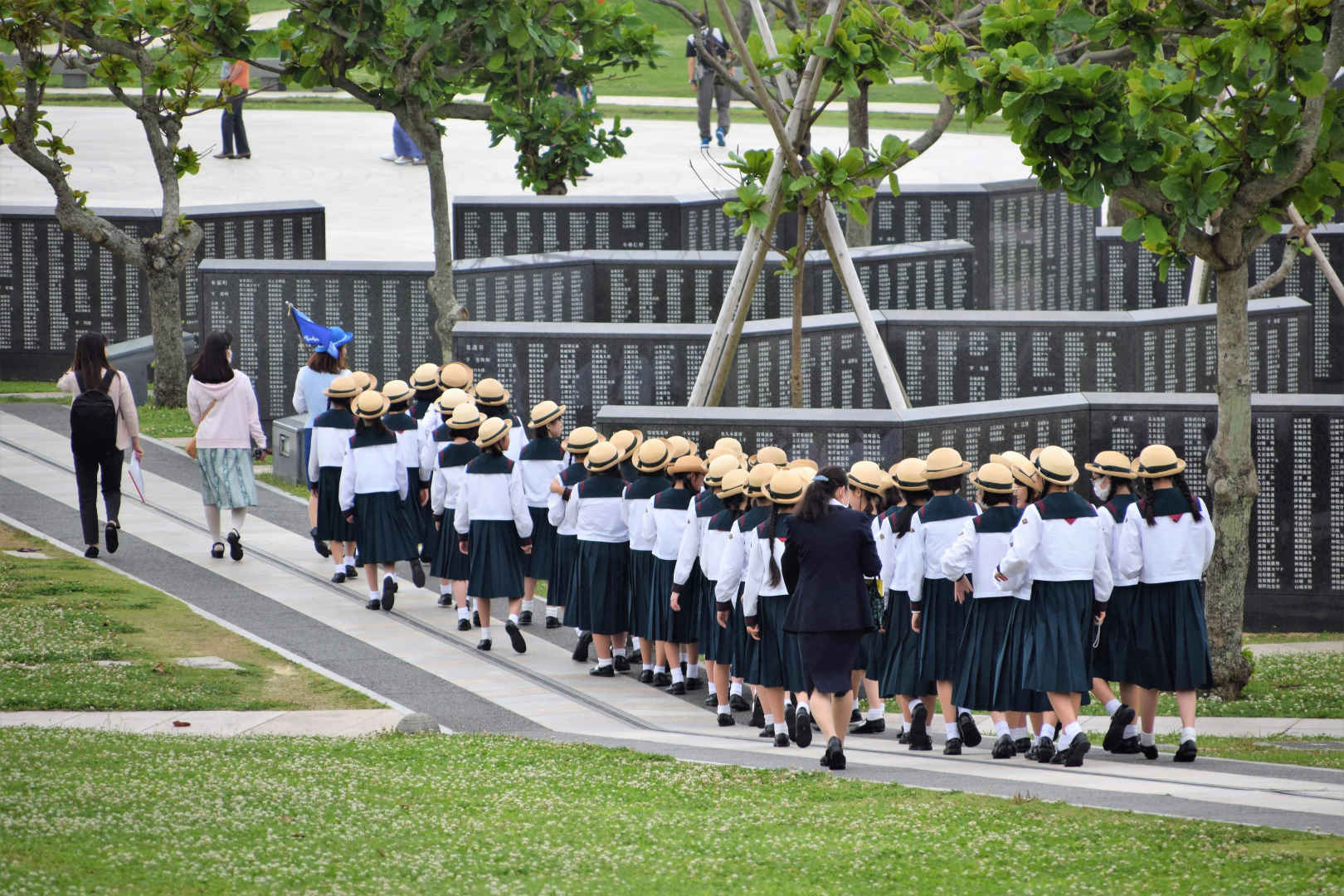
In the afternoon, visit Sefa-Utaki, a UNESCO World Heritage Site 40 minutes from the Peace Park. This sacred site has enormous spiritual significance in Okinawa’s native Ryukyuan religion.
I loved Sefa-Utaki. According to ancient texts, this is where Amamikyu, the goddess of creation, first set foot on Okinawa. Kings and priestesses made pilgrimages here for ceremonies. Winding paths lead through lush jungle to shrine areas and rock formations. The most sacred spot features two huge rocks forming a triangle-shaped space, like a natural cathedral. The spiritual energy makes it a powerful place to end your day.
Nagasaki – Days 9-10
We had only heard of Nagasaki because of the devastating atomic bomb attack the city suffered during World War II. But the place has a fascinating history that started long before this tragedy befell it.
Day 9: Travel to Nagasaki
After Okinawa, we were looking for the most convenient direct flight back to the south of Japan’s main islands. We discovered a cheap flight to Nagasaki, so it became the next stop on our Japan itinerary.
Where to stay in Nagasaki
The Dejima area has lovely waterfront views and is close to historical sites, while Chinatown/Shinchi puts you near excellent restaurants and cultural attractions. We stayed near Nagasaki Station, which is most convenient for transport links, with easy access to trams and trains.
The best accommodation in Nagasaki
We chose to stay in a traditional ryokan for the authentic tatami mat and yukata robe experience, which added so much to our Nagasaki visit. It also had modern conveniences like Wi-Fi, air-conditioning and flat-screen TVs, so it was perfect. If you’d like to stay in a ryokan, try the superb Nisshokan Bettei Koyotei.
Book the best accommodation in Nagasaki for your dates by exploring the map below:
Where to eat in Nagasaki
We discovered a restaurant called Yakitori Torimasa Ebisu, where we ate heavenly yakitori – chargrilled meats, seafood and veg on skewers. Seriously, it all tasted so good and simply melted in our mouths.
Helpfully, the restaurant has an English menu. The chef can also recommend dishes for you, before cooking them right in front of you. He told us he has been making yakitori like this for ten years. Our favourite dishes included the miso pork belly. Highly recommended – one of our favourite dining experiences on our Japan trip, it’s ranked one of Nagasaki’s best restaurants.
Day 10: Peace memorial and a million dollar view
A short tram ride from Nagasaki’s main station is the Nagasaki Peace Park. Even the trams themselves have a cute retro style.
In Nagasaki Peace Park, you will find the ‘hypocenter’. This is the exact spot where the atomic bomb landed on the city in 1945. This bomb destroyed the north of the city, killing 35,000 people in less than a second.
Nearby you can see a remnant of a church that was one of the area’s only buildings left standing. You can also find a preserved part of the ground, exactly as it was after the bombing. Tools and teacups show the sheer devastation at ground level and the lives that were lost here.
As you walk through Nagasaki Peace Park, you will find statues dedicated to the people of Nagasaki. Calling for world peace, they include the striking Peace Statue. It is an emotional experience.
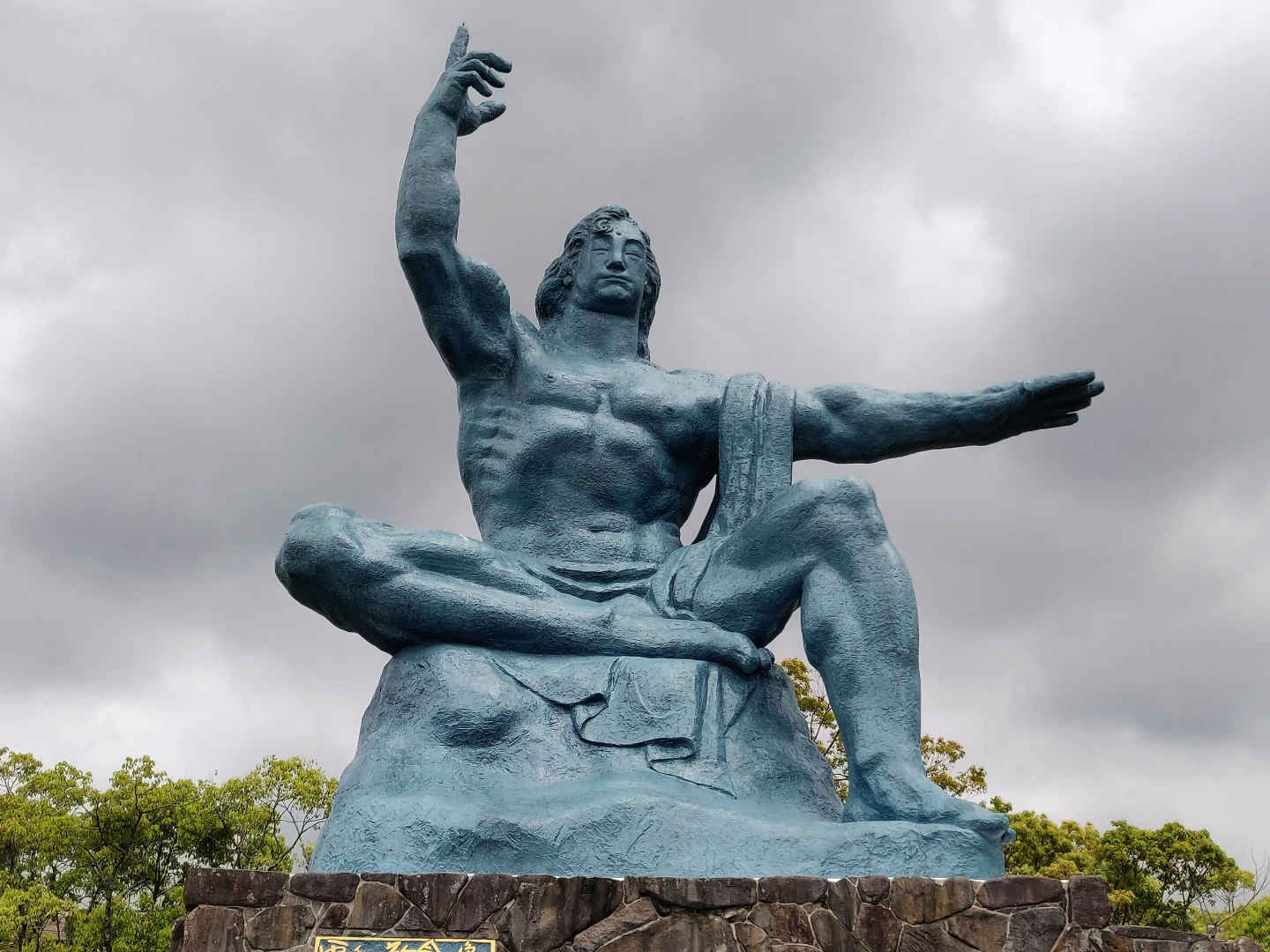
In the evening, head to Fuchi Shrine Station. From here you can catch the half-hourly Nagasaki Ropeway up to the scenic Mount Inasayama Observatory and viewing platform. It sits 333 metres (1,093 ft) above the city.
The panoramic sights from up here are called Nagasaki’s ’10 Million Dollar Night View’. You can see the city’s many twinkling lights, mountains and reflective river. It’s ranked as one of the world’s top 3 night view spots. Every evening, shortly before 10pm, the local TV and radio station transmitters light up in a special colourful display.
Hiroshima – 3 nights (Days 11-13)
The next stop on this 3 week Japan itinerary is Hiroshima. Three nights gives you time to properly absorb the emotional impact of the Peace Memorial sites and visit the nearby Miyajima Island with its cute deer and iconic floating torii gate.
Day 11: Travel to Hiroshima
From Nagasaki, it’s a four hour train journey to Hiroshima, with a transfer at Hakata station. We’d paid for this in advance thanks to our JR Passes.
Where to stay in Hiroshima
The best area to stay in Hiroshima is the city centre, near the Peace Memorial Park. Alternatively, the Hiroshima Station area is great for connectivity for day trips to Miyajima Island and other destinations.
Explore the map below to find the best accommodation deals in Hiroshima for your dates:
The best hotel in Hiroshima for fabulous city views
In Hiroshima, we stayed at the fabulous Rihga Royal Hotel. As it was my birthday trip, the hotel staff had kindly upgraded our room. Our corner room on a high floor of the tower had panoramic views over the city and to Miyajima island. In the evening, we went to the hotel’s rooftop bar. Here, we tasted deliciously fragrant and spicy Japanese gin, served by an expert bartender.
Check out the full list of excellent hotels in Hiroshima.
Day 12: Peace Park and Atomic Bomb Dome
Hiroshima is well known, along with Nagasaki, for being the site of the devastating atomic bombings during World War II. Here, you can visit the Atomic Bomb Dome. This iconic building was one of the few constructions left standing after the bombing.
The attack killed more than 70,000 people instantly, whilst the same number succumbed to radiation poisoning. The building was preserved exactly as it was, serving as a memorial to the lives lost. It is now a UNESCO World Heritage Site and part of the Hiroshima Peace Memorial Museum and Park.
Book your place on a historical walking tour of Hiroshima here.
Day 13: Trip to Miyajima Island
The picturesque Miyajima Island is the perfect day trip from Hiroshima. Some people recommend staying overnight there too, but rooms are in high demand.
The island’s ‘floating’ Great Torii Gate in the bay is a popular spot for photos. It marks the entrance to the 12th-century Itsukushima Shrine, another UNESCO World Heritage Site.
Reserve your spot on a popular full day tour of both Hiroshima and Miyajima Island here.
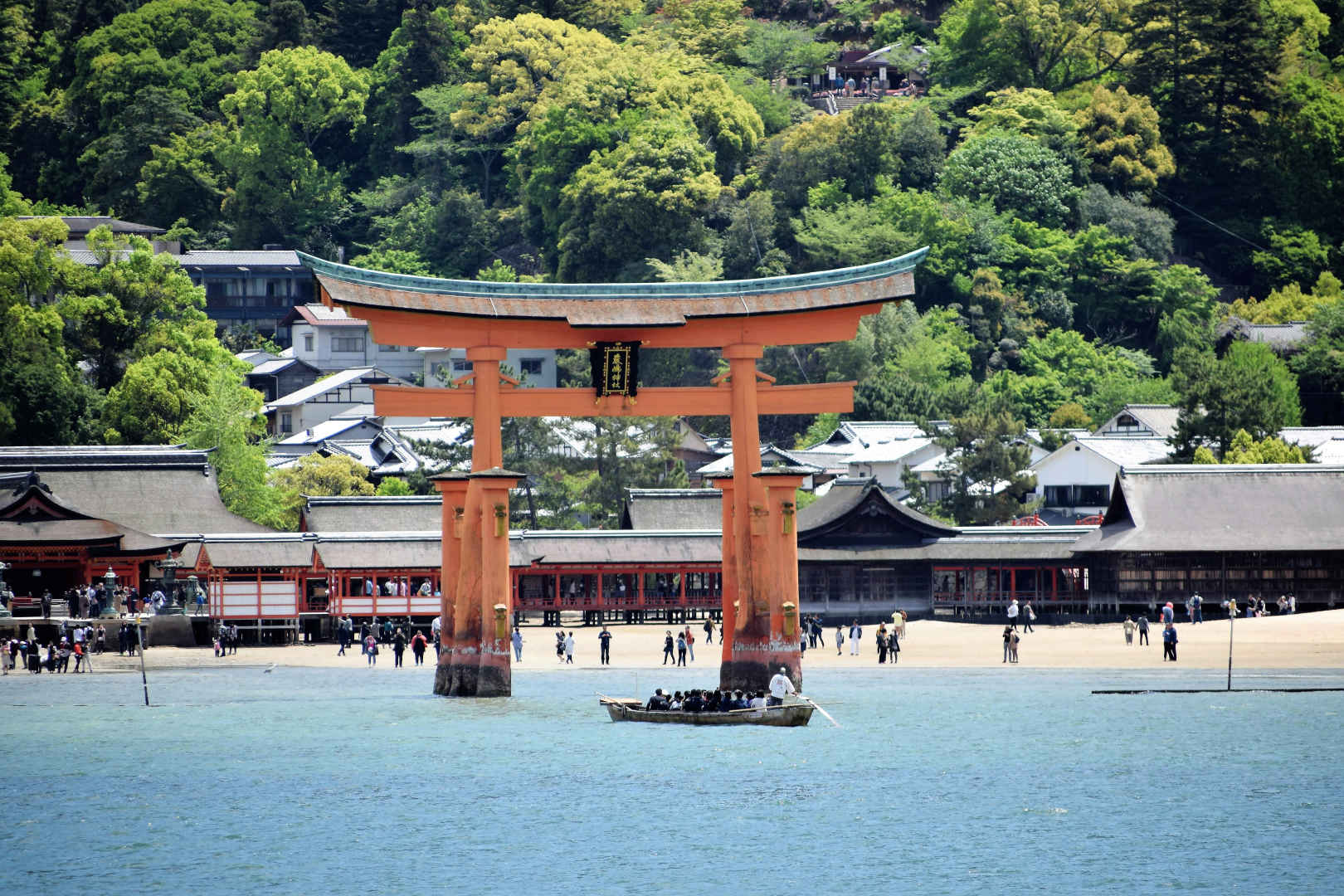
On Miyajima, friendly deer roam fearlessly among the tourists, searching for snacks. It’s rare to see these normally shy creatures up close and be able to pose for photos with them.
One of the island’s most impressive structures is the Tahoto Pagoda, a striking red Buddhist temple built in 1523.
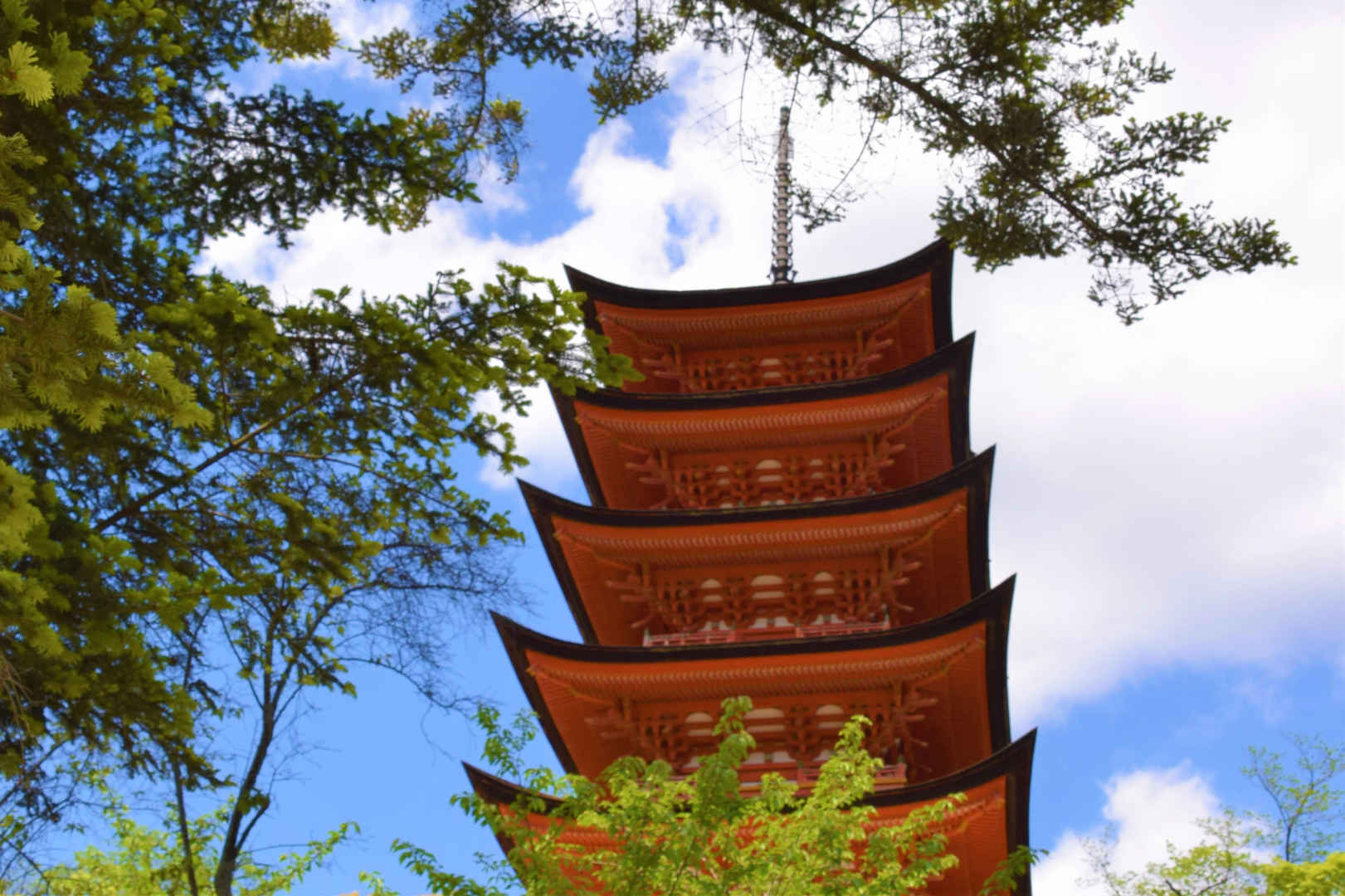
In the afternoon, take the Miyajima Ropeway the two journeys to the top of the mountain for incredible views. There will probably be queues, but it is worth it. You can hike the forests at the top of this sacred mountain and discover the Seven Wonders of Mount Misen.
Book a day trip to Miyajima including the ropeway ride and avoid the queues – book here.
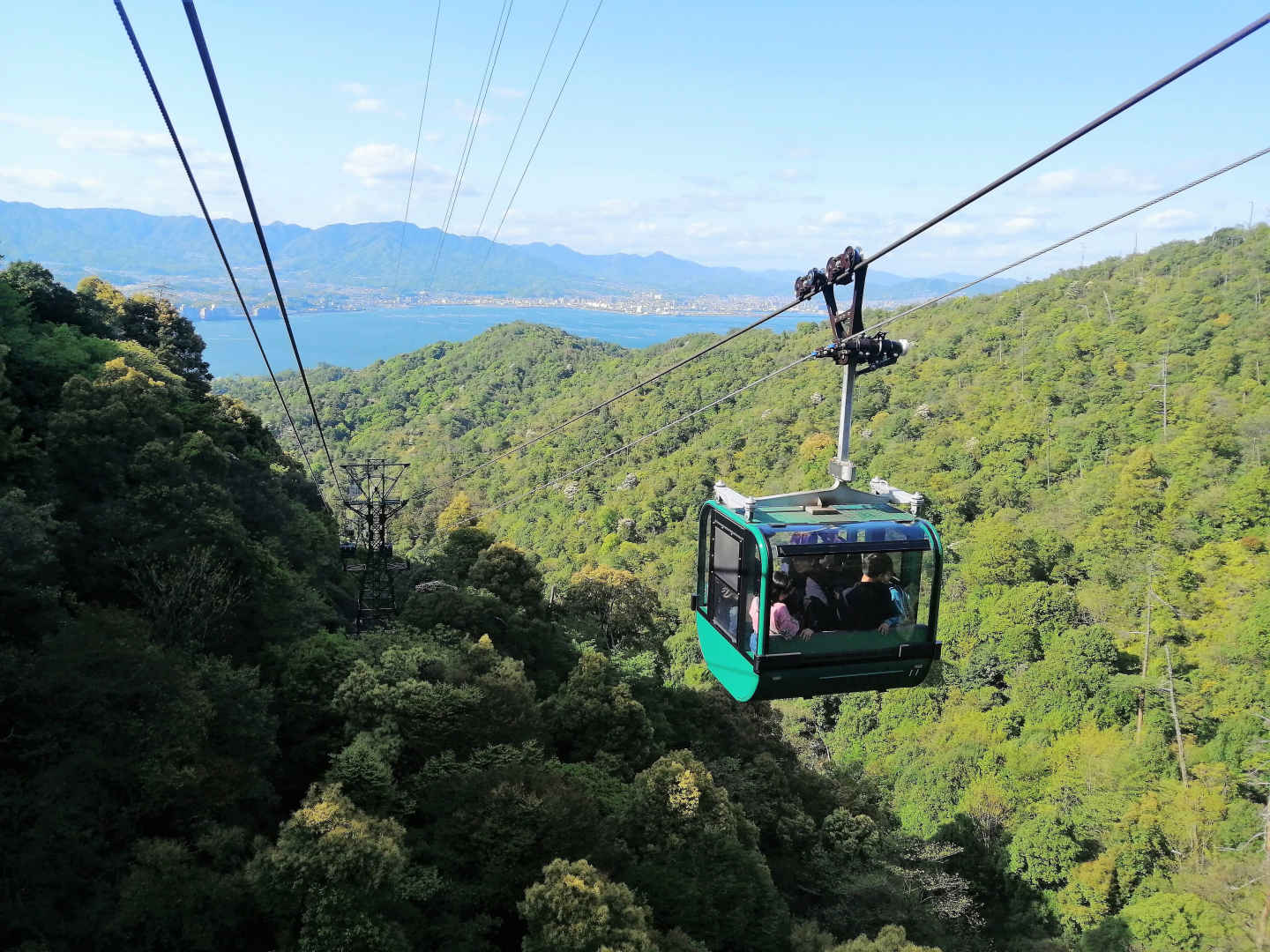
Osaka – Days 14-15
Home to 19 million people, Osaka is a huge port city. It’s known for its modern architecture which lights up at night. While you can do one day in Osaka, two nights is great so you can take your time.
Day 14: Travel to Osaka
From Hiroshima, it’s a 2.5 hour journey by high speed bullet train to Osaka.
Where to stay in Osaka
Staying near Osaka Station is useful as it gives you easy access to the shinkansen bullet train for your onward trip. Otherwise, Dotonbori/Namba is the heart of Osaka’s entertainment and food scene – perfect for street food lovers and nightlife, though it can get crowded. Shinsaibashi is good if you love upscale shopping and dining. Tennoji is more budget-friendly with good transport connections.
Browse and book from the extensive list of places to stay in Osaka here or explore the map below:
Day 15: Osaka Castle, street food and nightlife
Osaka’s main historical landmark is the 16th-century Osaka Castle. This elegant building is surrounded by a moat and park with plum, peach and cherry-blossom trees.
Book your ticket to Osaka Castle in advance here.
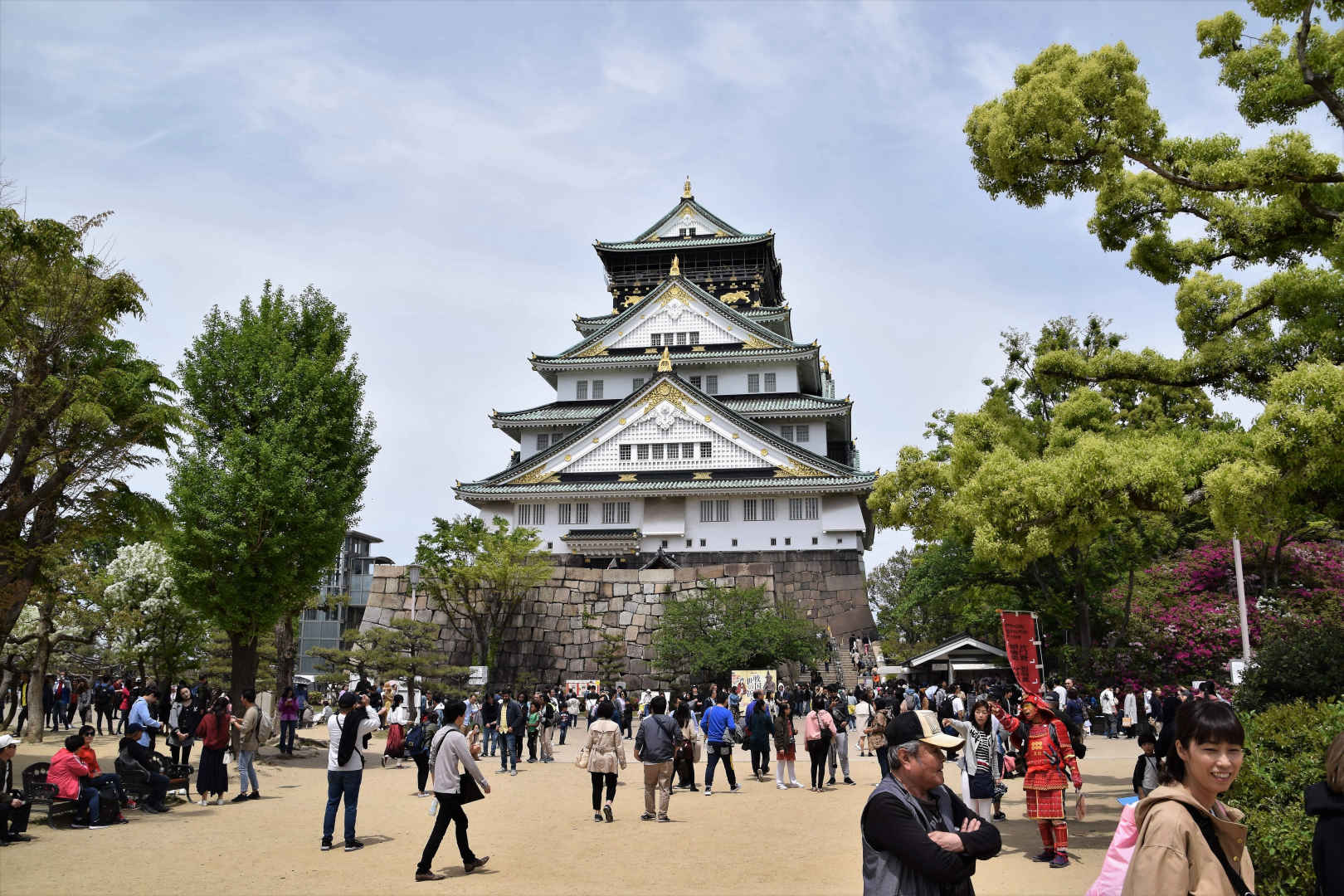
Osaka is renowned for its tasty street food, so, as suggested by our Japanese friends, we had to try it.
First up, was takoyaki, stuffed batter balls topped with sauce. Even watching these little local snacks being made is a joy. The market stall owners whip the batter around in small moulds to shape the balls.
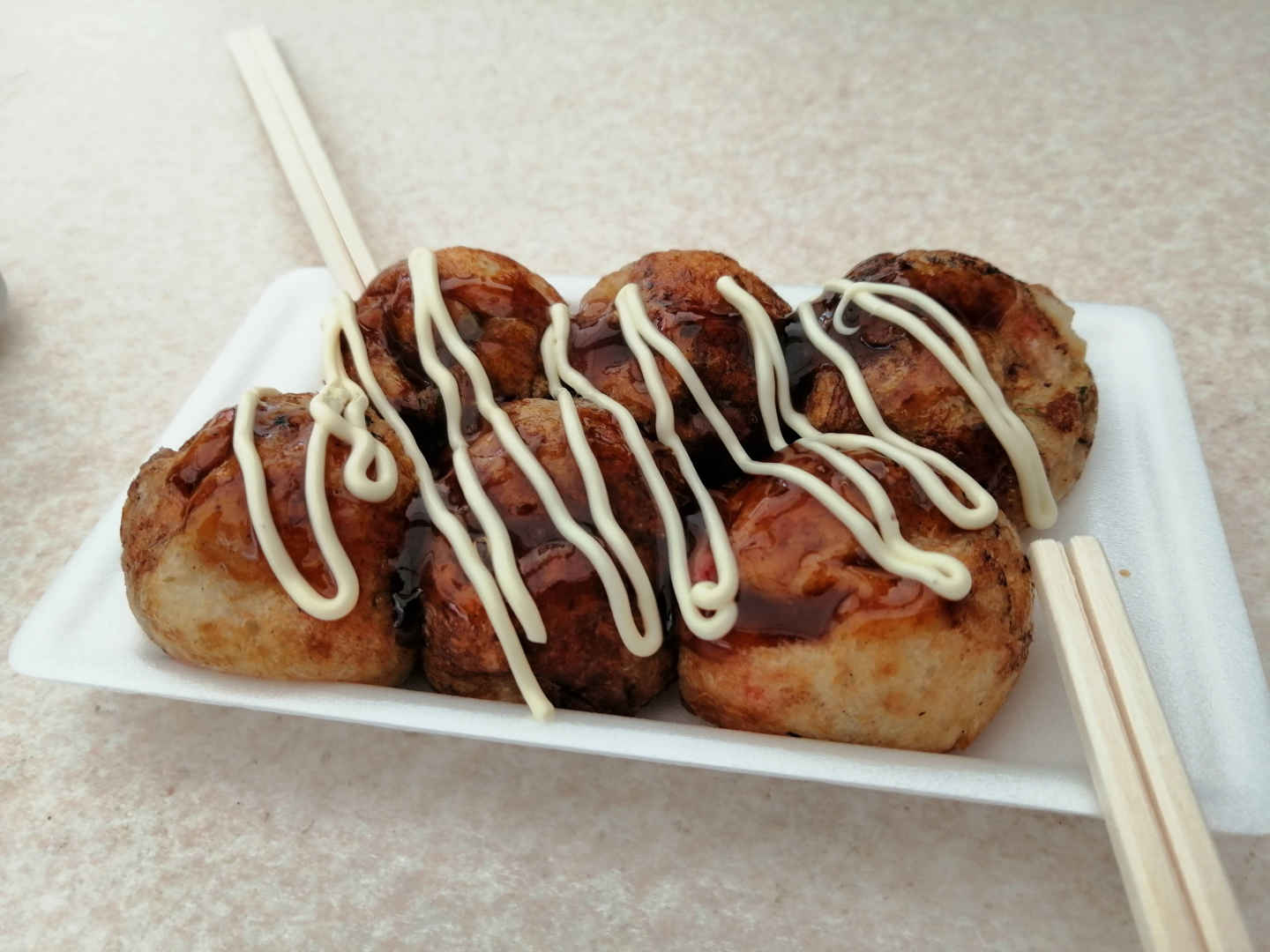
Next up, is okonomiyaki, delicious Japanese savoury pancakes. They’re filled with your choice of meat, seafood, vegetables and cheese, and topped with plenty of sauce. It’s street food heaven.
Food lovers will adore this tasting tour of Osaka featuring 13 of its best dishes – book it here.
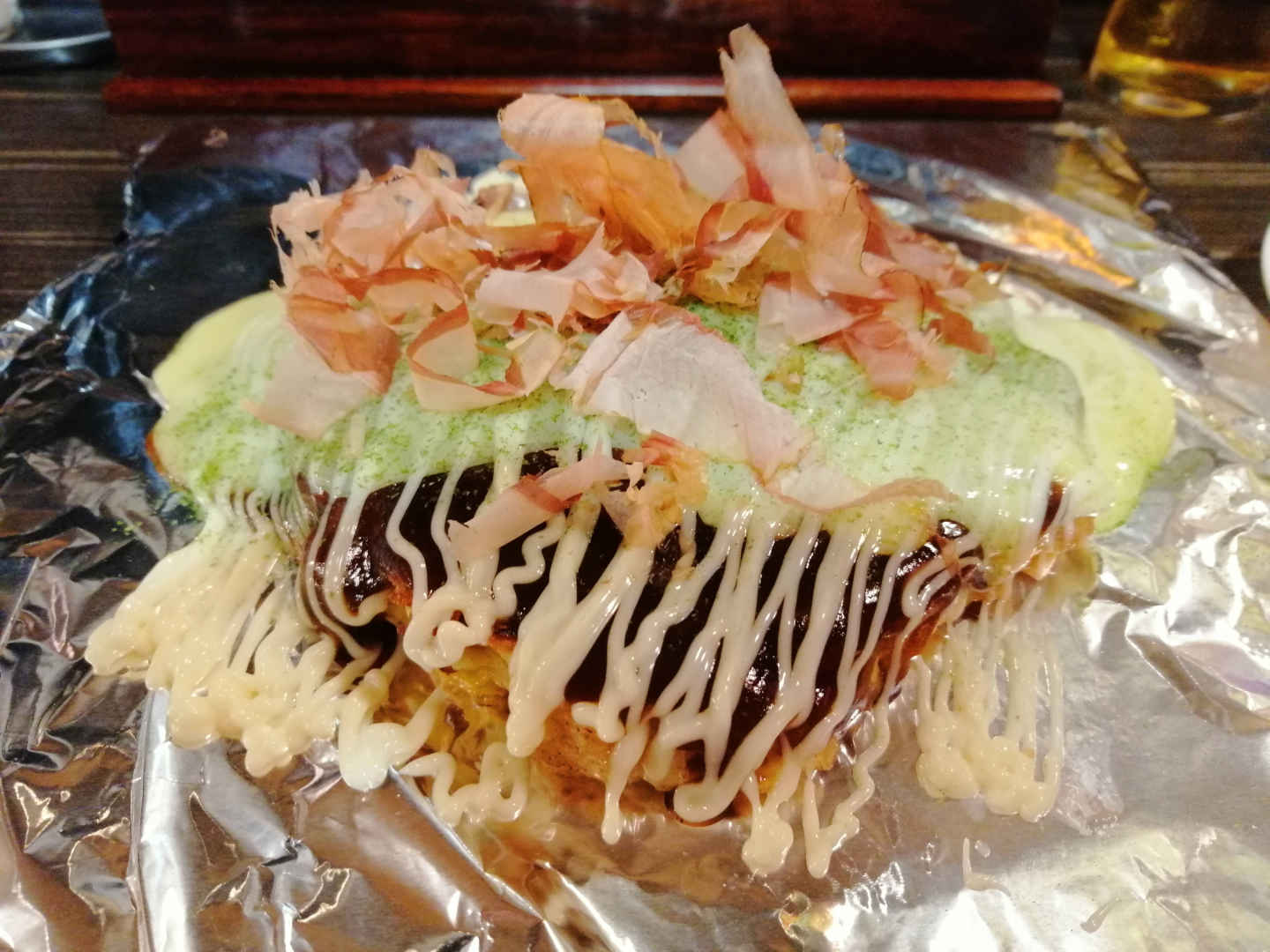
As day turns to night in Osaka, the Dotonbori area of the city lights up into bright colours. It’s awe-inspiring, simply walking along the streets and looking up at the giant, luminous adverts.
Occasionally, you’ll see video game arcades. Open 24 hours a day, they bombard you with loud machine noise, cigarette smoke and coloured lights. The dedicated local gamers don’t seem to mind though.
Book a sightseeing cruise of Dotonbori including a drinks discount here.
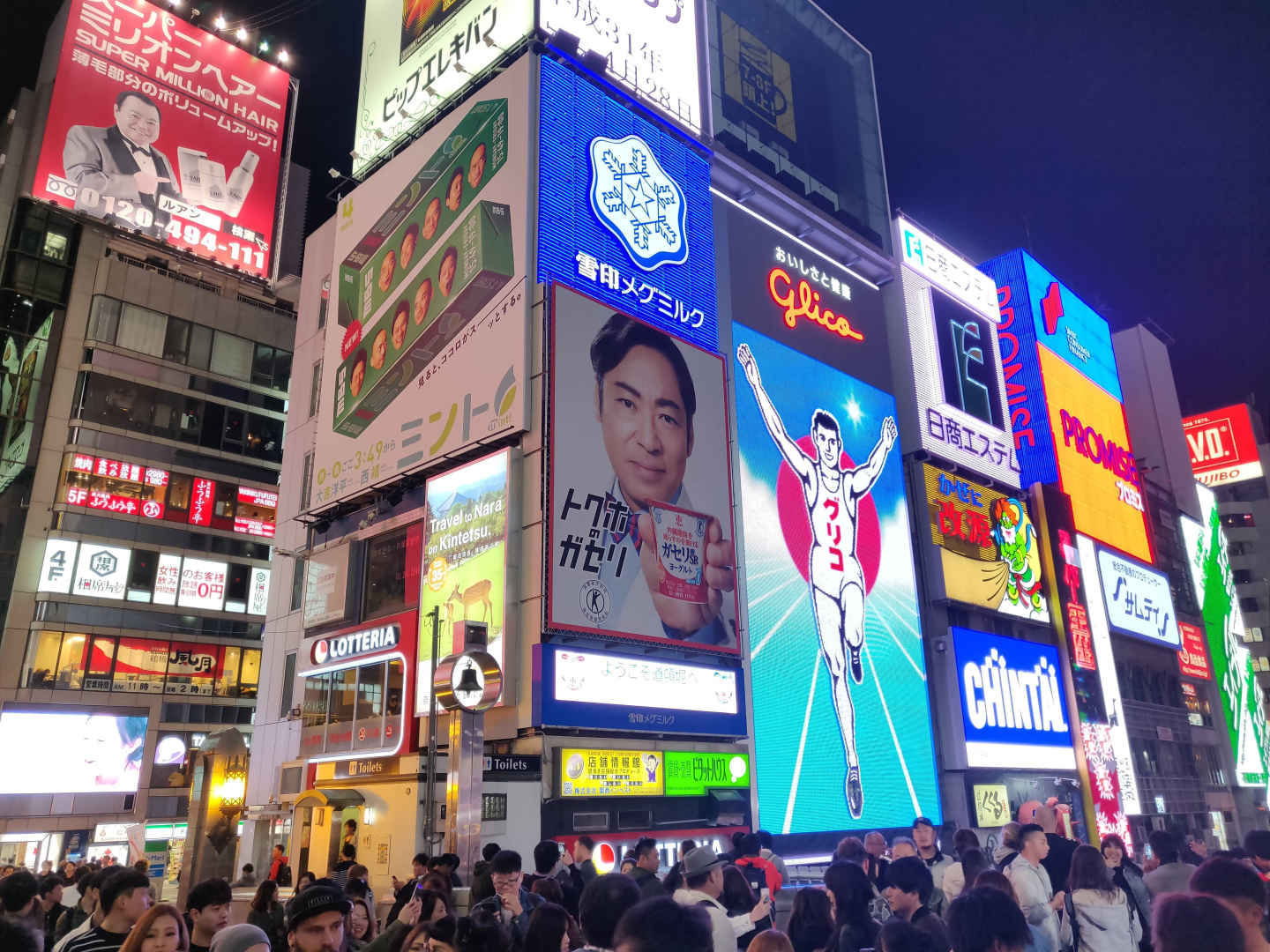
Kyoto – Days 16-18
Once the capital of Japan, it is famous for its 2,000 beautifully preserved religious places. This includes 1,600 Buddhist temples and 400 Shinto shrines, as well as imperial palaces, gardens and traditional wooden architecture. The historic monuments of ancient Kyoto are a UNESCO World Heritage Site. As the city is one of Japan’s most popular tourist destinations, allow at least two days in Kyoto.
Day 16: Travel to Kyoto and see Nijo Castle
Kyoto is just a 15-minute bullet train from Osaka. This will give you time to explore the city in the afternoon and evening. Why not visit Nijo Castle, a UNESCO World Heritage site with ornate rooms, beautiful gardens and the famous “nightingale floors” that squeak to warn of intruders. The castle will give you fascinating insights into Japan’s feudal power structure and samurai culture.
Book your place on a guided tour of Nijo Castle here.

Where to stay in Kyoto
The most popular places to stay in Kyoto are Gion, in the heart of the geisha district, and near Kyoto Station with its excellent transport links. Kamigyo (where we stayed) is more residential and local, with good access to temples and traditional neighborhoods whilst being less touristy than Gion.
Explore the map below to find the best Kyoto accommodation deals for your dates:
Day 17: Visit the famous bamboo forest
A popular day trip destination from Kyoto that you will recognise from Instagram photos is the Arashiyama Bamboo Forest. Just under an hour by public transport from central Kyoto, the bamboo forest walk is extremely popular with tourists. Go early or be prepared for crowds.
Head off the beaten track to find secluded shrines and mossy pathways where you can enjoy a peaceful moment. We found a quiet family-run Udon noodle restaurant called Ogura Chaya, where you can tuck into delicious noodle soup.
Book your tour of the Arashiyama Bamboo Forest, as well as gardens, temples and monkey park here.
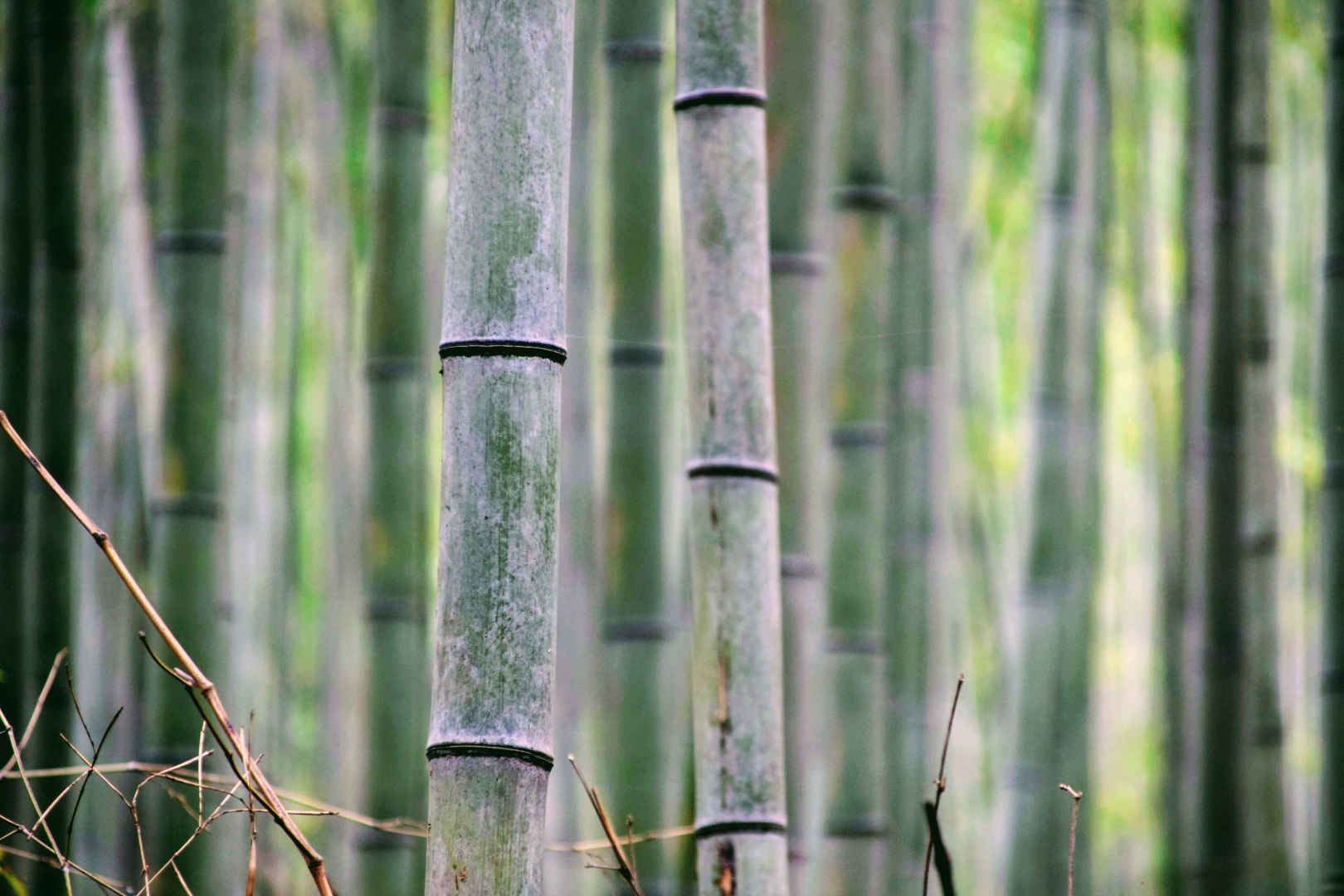
Day 18: Explore Kyoto’s geisha district
Kyoto is a great place to go shopping. It also has a long tradition of being a centre for geisha, the distinctive traditional Japanese female entertainers.
The most famous geisha district is Gion. Here, you will find many traditional wooden merchant buildings containing shops, restaurants and teahouses, where geisha entertain guests. At the Gion Corner theatre, you can watch performances showcasing a variety of Japanese theatrical arts.
The nearby Ponto-chō district is also known for its preserved traditional architecture and entertainment. Pontocho Alley in particular is an atmospheric place to wander around after dark. In its narrow streets, you can discover tiny, moody bars. Highly experienced bartenders mix you cocktails served with flowers, fruit and traditional Kyoto snacks.
Book your place on a popular tour of Kyoto’s geisha district and its hidden gems here.
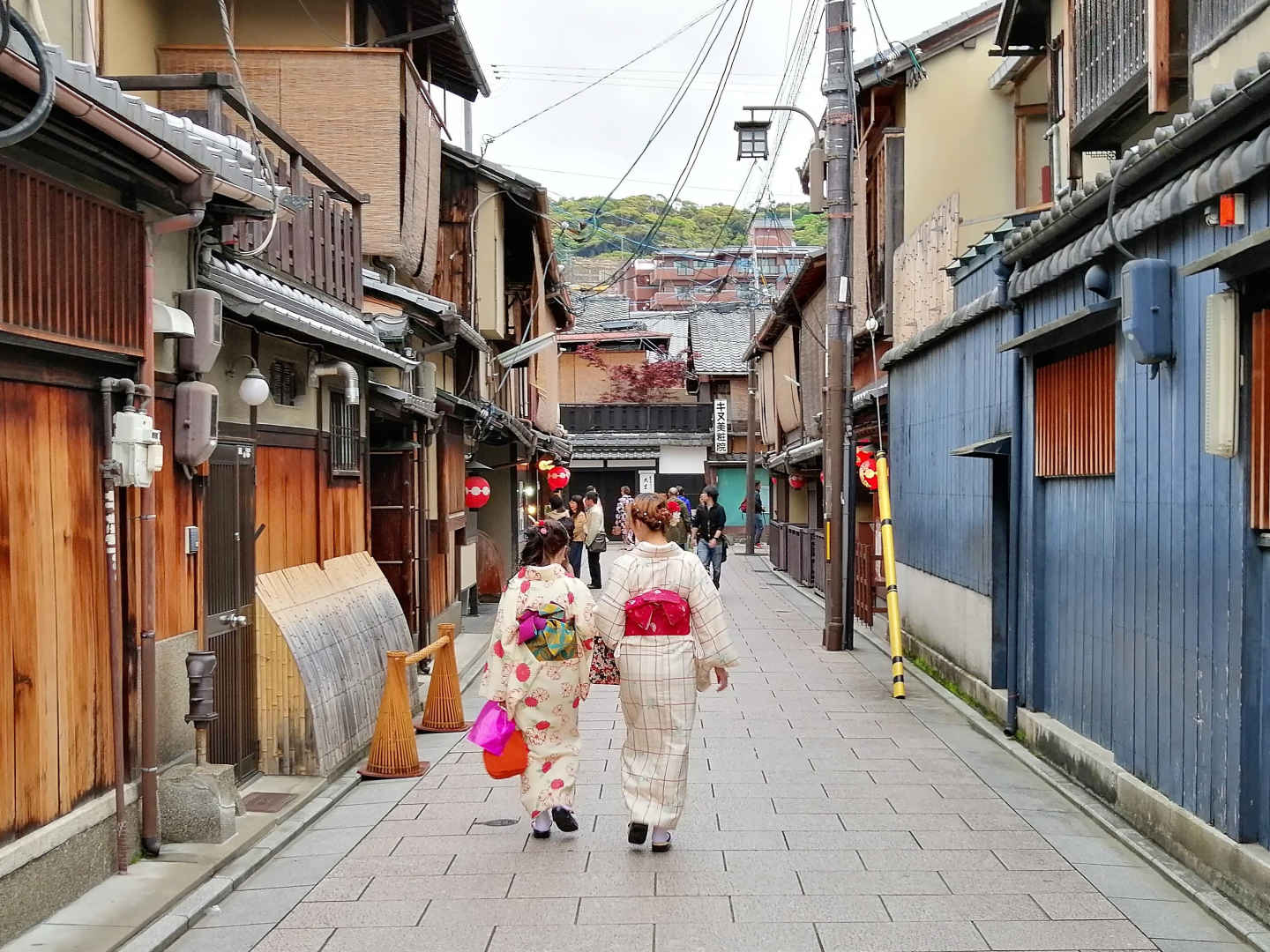
Tokyo and Mount Fuji – 3 nights (Days 19-21)
Finally, we return to Tokyo after three weeks of incredible experiences. Enjoy your last few days in Japan with a day trip to the majestic Mount Fuji.
Day 19: Travel to Tokyo
From Kyoto it’s a three-hour bullet train ride to Tokyo, then you can check into your accommodation and relax for the evening.
Day 20: Mount Fuji Day Trip
About 1.5 hours from central Tokyo by train or bus is the famous Mount Fuji. This special place is well worth a day trip to enjoy the views.
We travelled from Tokyo to Kawaguchiko Station and caught the Red Line bus to Oishi Park. We were fortunate to have perfect weather to see this magnificent mountain, as sometimes the summit is obscured by clouds.
Check out this highly popular day trip to all the best scenic spots at Mount Fuji – book here.
Day 21: Departure from Tokyo
Depending on your flight time, your final morning in Japan might be spent checking out of your accommodation and heading straight to the airport. Allow plenty of time as Tokyo’s airports can be busy and transport takes time.
Otherwise, enjoy a leisurely breakfast, do some last minute souvenir shopping or have a quick final stroll around your Tokyo neighbourhood.
Your flight home marks the end of an unforgettable 3 week Japan itinerary, from the bright lights of its modern cities to ancient temples, tropical beaches and sacred mountains.
For convenience, book your transfer to the airport in advance here.
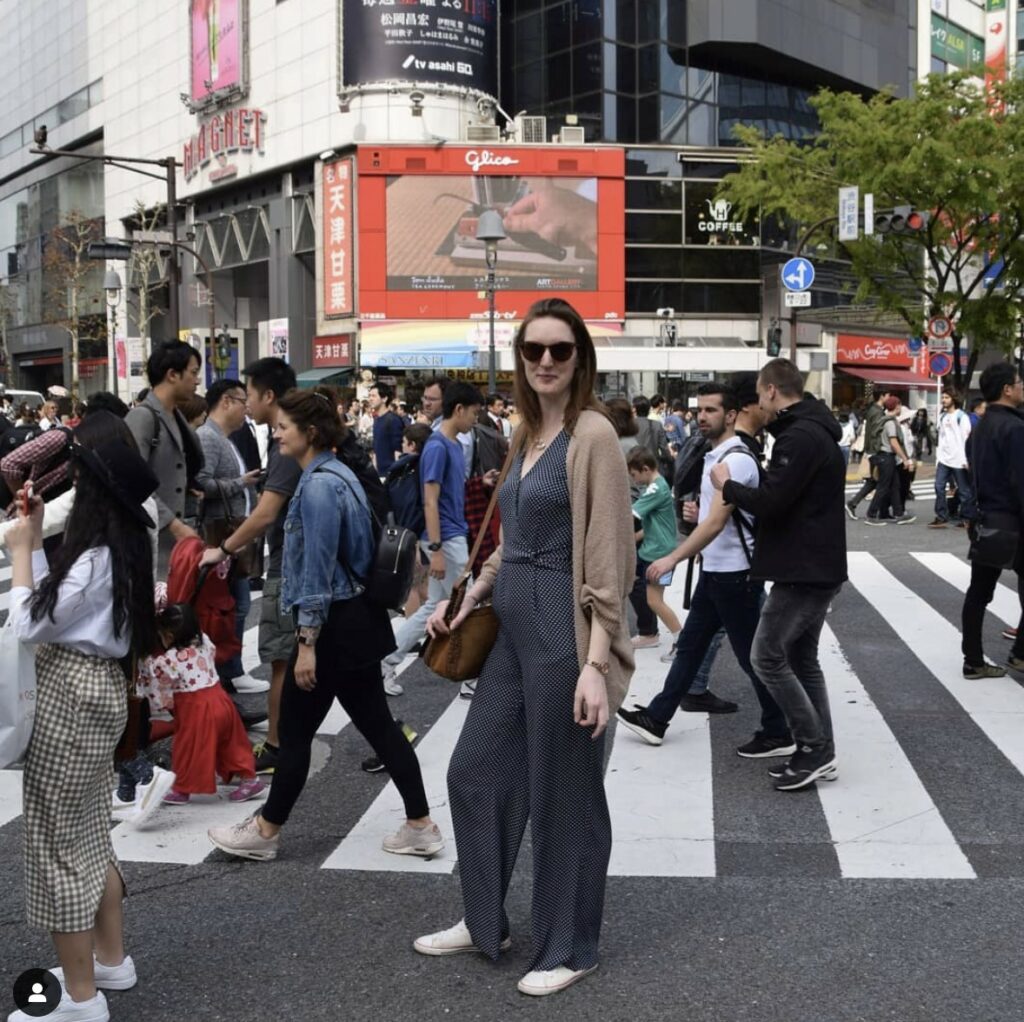
Is spending 3 weeks in Japan expensive?
You may be wondering, how much does a 3 week stay Japan cost? Japan is certainly more expensive than other countries in Asia to visit. In total, for our three weeks in Japan, I spent around €3500 (around $3500 or £3000). You can definitely do it for cheaper if you stay in shared accommodation instead of private rooms.
Breakdown of how much money you’ll need per day
For me, it worked out at around €165 ($165/£140) per day. I will break down the costs below, to help you calculate the price for your own trip.
Just over a third of the total cost was for accommodation. We stayed in simple hotel rooms, a traditional Japanese ryokan and a nicer hotel in Okinawa for my birthday. You’ll save money on accommodation in Japan if you stay in hostel dorm rooms.
Around a quarter of the cost was for transport. This included return flights from mainland Japan to Okinawa and the JR Pass for high speed train travel. The JR Pass is an expensive upfront cost, but it works out cheaper than booking individual train journeys.
Just over 15% of the total, was for food and eating out at restaurants. The good news is you can dine well in Japan on a budget. We only spent around €27 (£22) per day on food. In Japan, you can find tasty street food on a budget. Even in one of the neighbourhood 7-11 supermarkets, you can find delicious and inexpensive Japanese snacks and meals.
Of the remaining budget, the largest was for tickets to attractions, but this only comprised 8% of the total.
To help you plan a budget and estimate costs for your trip to Japan, check out this useful site.
How much cash should you take?
Many vendors still only take cash rather than credit card payment. For this reason, make sure you always have plenty of cash on you. Sometimes it will take a while to find an ATM, so it’s worth taking out a large sum of money. You will probably be charged by your bank, and maybe the ATM too, for each withdrawal. Luckily, Japan is a safe place to travel, so you don’t need to worry about carrying cash with you.
This is the best (and worst) time to visit Japan
Spring is said to be the best time to visit Japan because it’s cherry blossom season. For my trip to Japan, we decided to go from mid-April to early May, over the Easter holidays. However, it’s good to check with a Japan itinerary blog or planner first. It was only after booking our flights that I realised our dates coincided with Golden Week.
Golden Week is a week in Japan during which there are several national holidays. This means many transport hubs, hotels and tourist attractions are much busier than normal. Normally the advice for international tourists is to avoid this period.
For this reason, it’s better to go in March or early April, if you want to see the cherry blossom. The autumn months between September and November is another good time to visit, as summer in Japan can get hot.
For us, Golden Week in 2019 coincided with the abdication of Japan’s Emperor Akihito. His son Naruhito, Crown Prince of Japan, ascended the throne, ushering in a new era for the country. This meant extended national holidays for the Japanese and a momentous time in history to visit Japan.
This is the fastest way to travel in Japan
As you will be travelling long distances, the best way to travel around Japan is by bullet train. Known as the Shinkansen, it is fast, comfortable and incredibly efficient.
The only thing you will need to worry about is getting on and off the train in time. They only allow around one minute at each station, before speeding off to the next stop.
How to buy tickets for the Shinkansen
Buying the bullet train tickets separately can be expensive, so I highly recommend buying a Japan Rail (JR) Pass. This allows you to travel on the Shinkansen as often as you want for a fixed price. A Japan train tour like this is arguably the best way to see Japan. You can buy a JR Pass for 1, 2 or 3 weeks here.
You need to order it in advance, then exchange your voucher for the pass itself at a train station. Here, you’ll need to book the individual tickets for your journeys.
Find out more, buy your JR Pass and get a free Japan train planner here.
Other ways to travel around Japan
When exploring how to travel around Japan, you will see there are other options, such as buses and internal flights.
We took internal flights for part of our trip, from Tokyo to Okinawa and from Okinawa to Nagasaki.
Buses can be useful if your Japan travel route is more off-the-beaten path. The Shinkansen mainly serves the big cities.
Frequently asked questions for a 3 week Japan itinerary
Is 3 weeks long enough for Japan?
Three weeks is the perfect amount of time for first-time visitors. You’ll experience Japan’s incredible diversity without rushing.
Is 21 days too long in Japan?
Not at all! Many people worry about getting ‘templed out’ or bored, but Japan’s diversity means every destination feels completely different. More likely, you’ll end up feeling that it wasn’t enough time!
How far in advance should I book accommodation?
Book 2-3 months ahead, especially for Kyoto and during cherry blossom season.
Is Japan safe for solo travellers?
Japan is one of the world’s safest countries. Solo travel is common and respected, especially for women. The biggest challenge is navigation, not safety.
Do you need to speak Japanese?
It would definitely be helpful but it’s not essential. Make sure you have your hotel address written in Japanese characters so taxi drivers can understand. Download Google Translate with camera function for menus and signs. Most major tourist areas have some English signage. Not all travel and tourism staff will know English but they will always do their best to help you.
What about vegetarian/dietary restrictions?
There are vegetarian options, such as gyoza (dumplings), ramen (soup), noodles and tempura (deep fried). However, if menus are in Japanese and without photos, it won’t be clear what the dishes are – as we found out on our first night in Tokyo! It’s best to learn key phrases, download translation apps and research restaurant options in advance. Many temples serve excellent vegetarian Buddhist cuisine.
Final thoughts on a 3 week itinerary in Japan including Okinawa
This 3 week Japan itinerary gives you the perfect balance of cultural immersion, natural beauty and unforgettable experiences. Each destination offers something completely unique.
Of course, Japan has so much more to explore. Because we chose to experience the tropical south, we saved northern Japan’s treasures for another adventure. Niigata, famed for producing the world’s finest sake, and Nagano with its famous snow monkeys bathing in hot springs at Jigokudani Monkey Park, are already on our list for next time.
That’s the beauty of Japan – even after three incredible weeks, it leaves you planning your return before you’ve even left. Whatever route you choose, you’re guaranteed an extraordinary journey through one of the world’s most fascinating countries.
Next up, discover the best itinerary for Okinawa, Japan’s tropical islands.


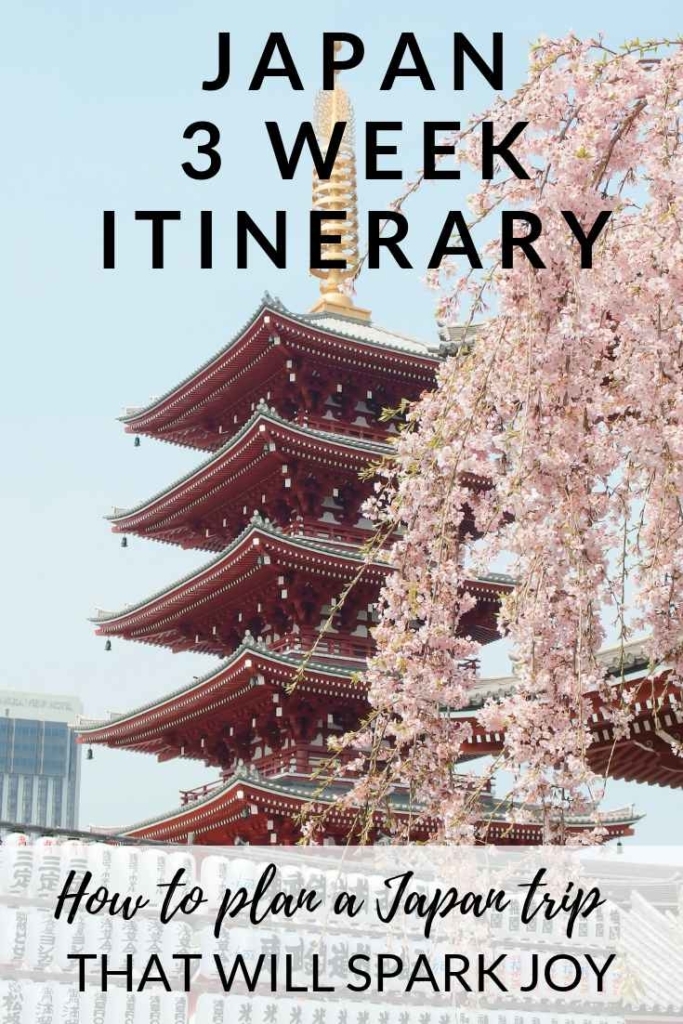
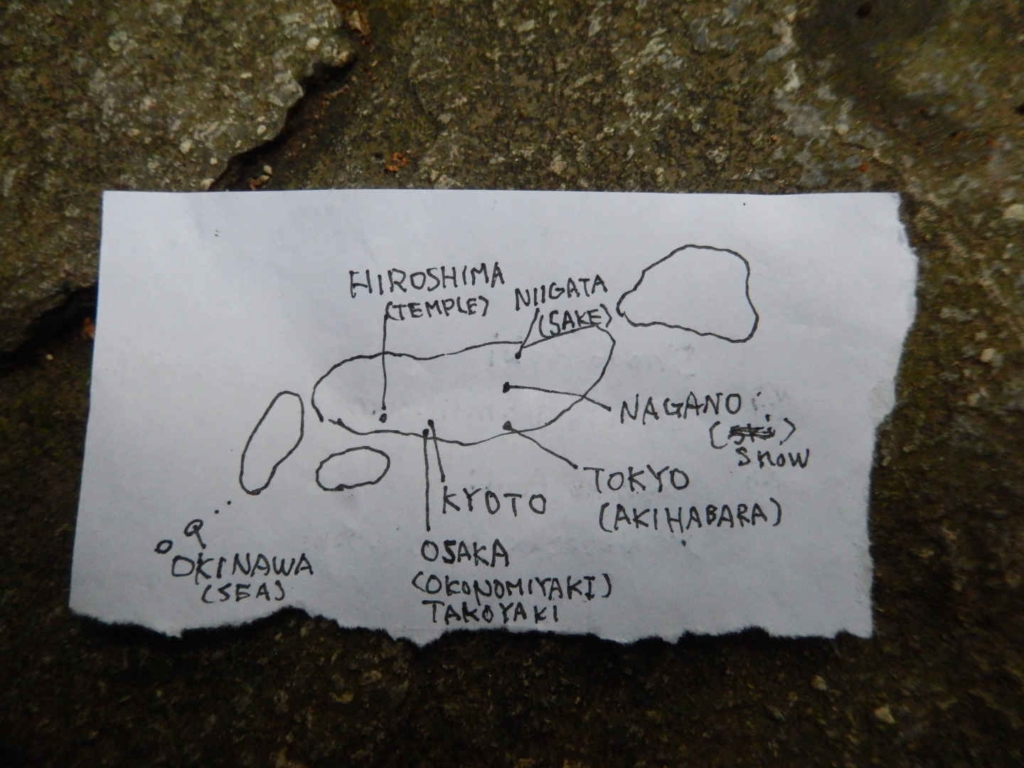
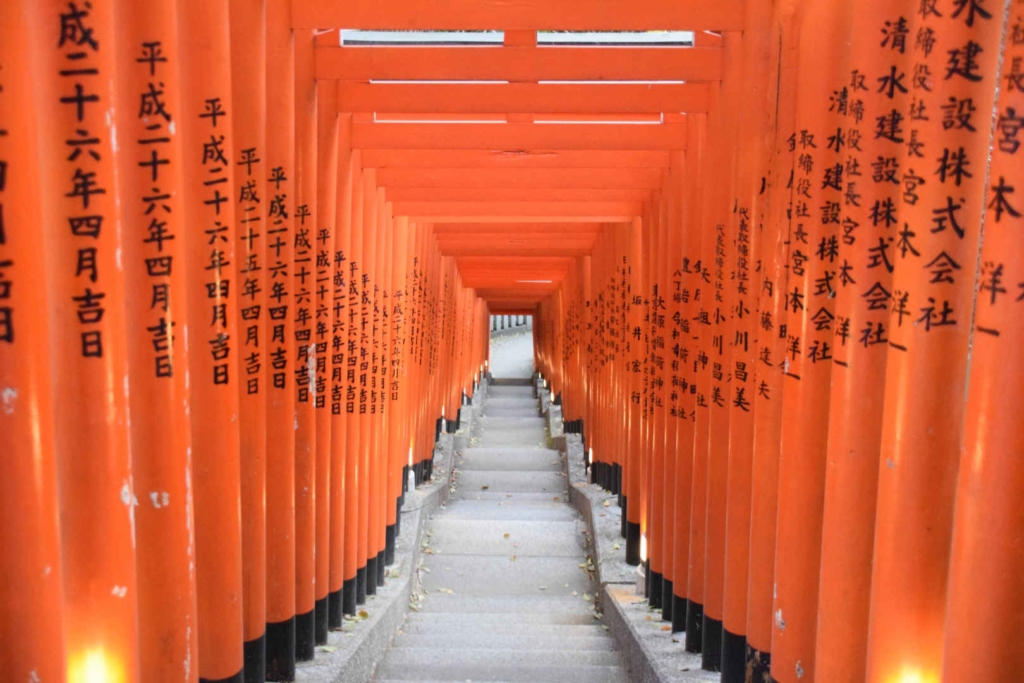
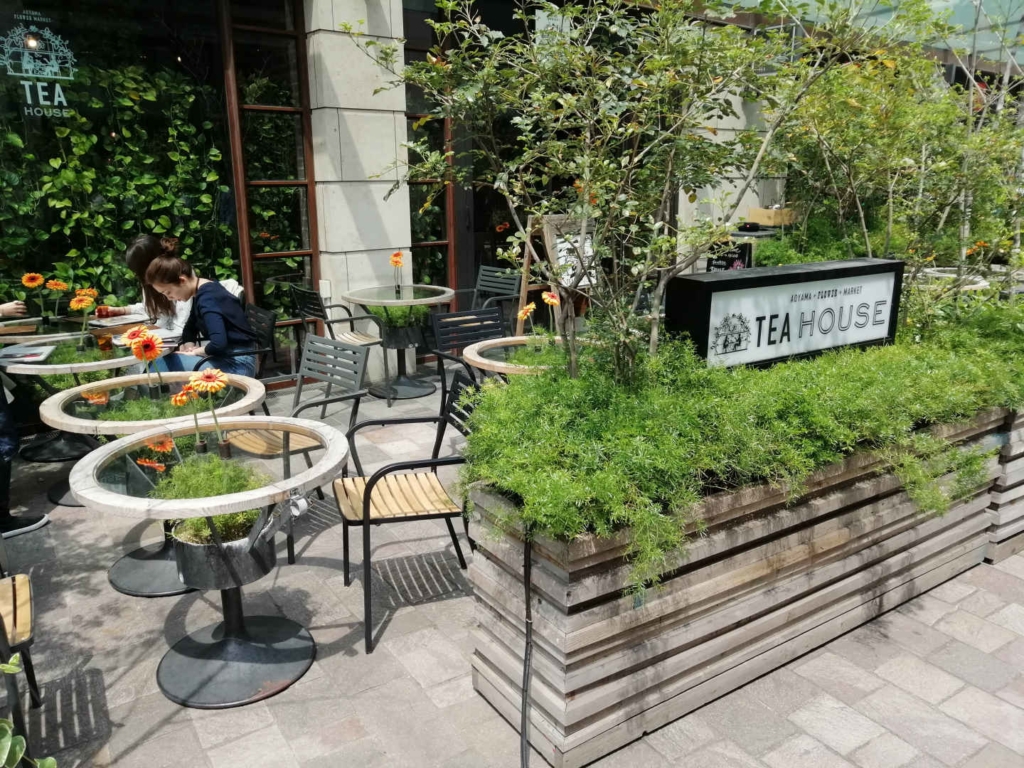
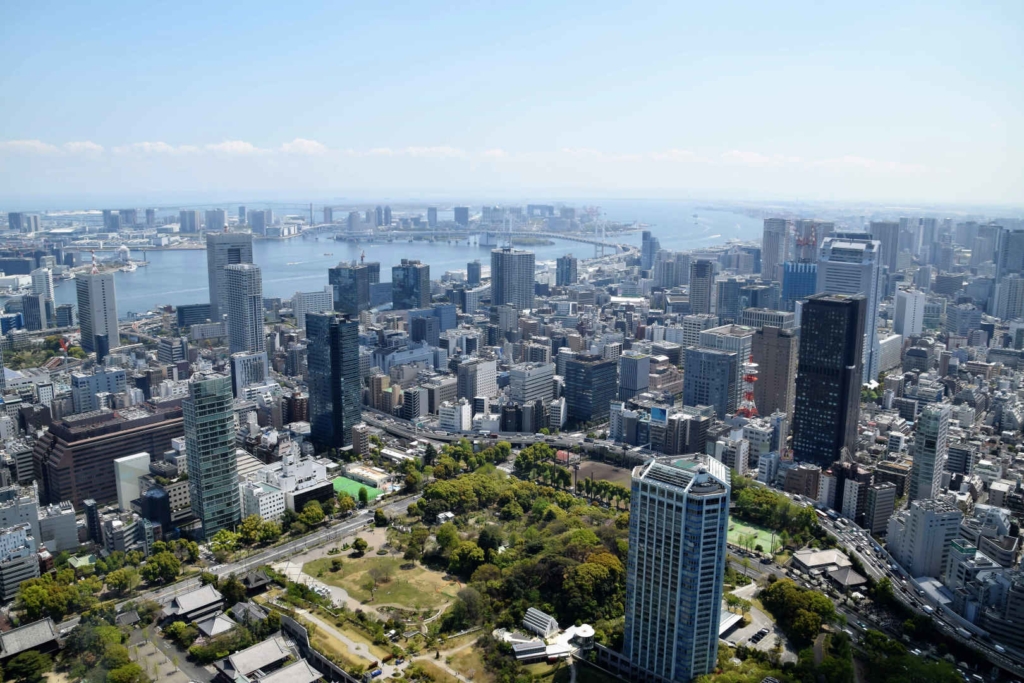
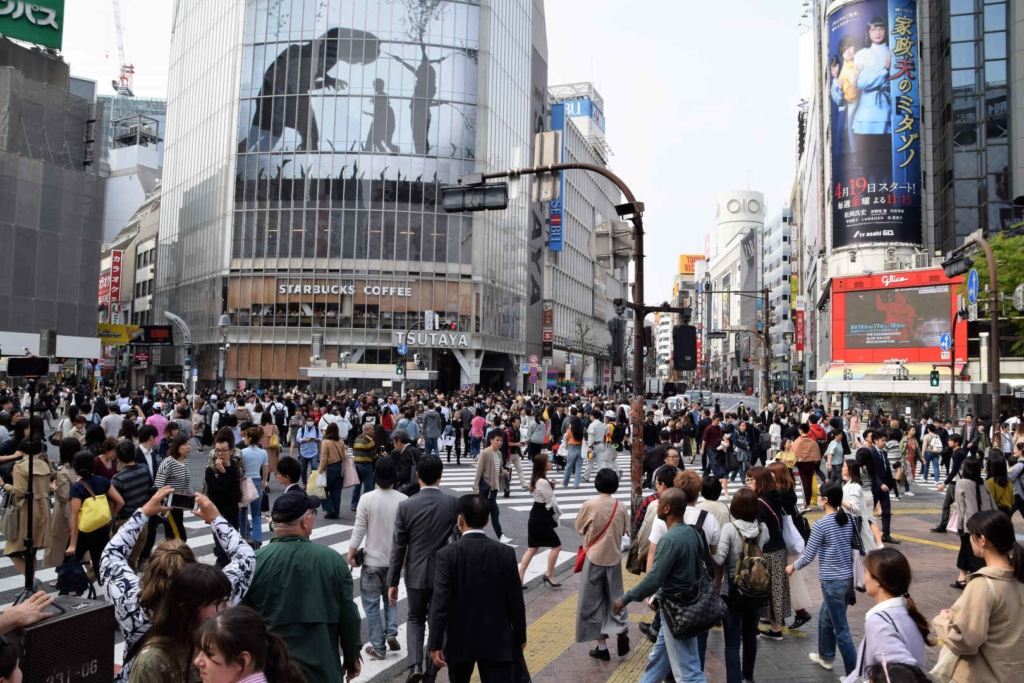
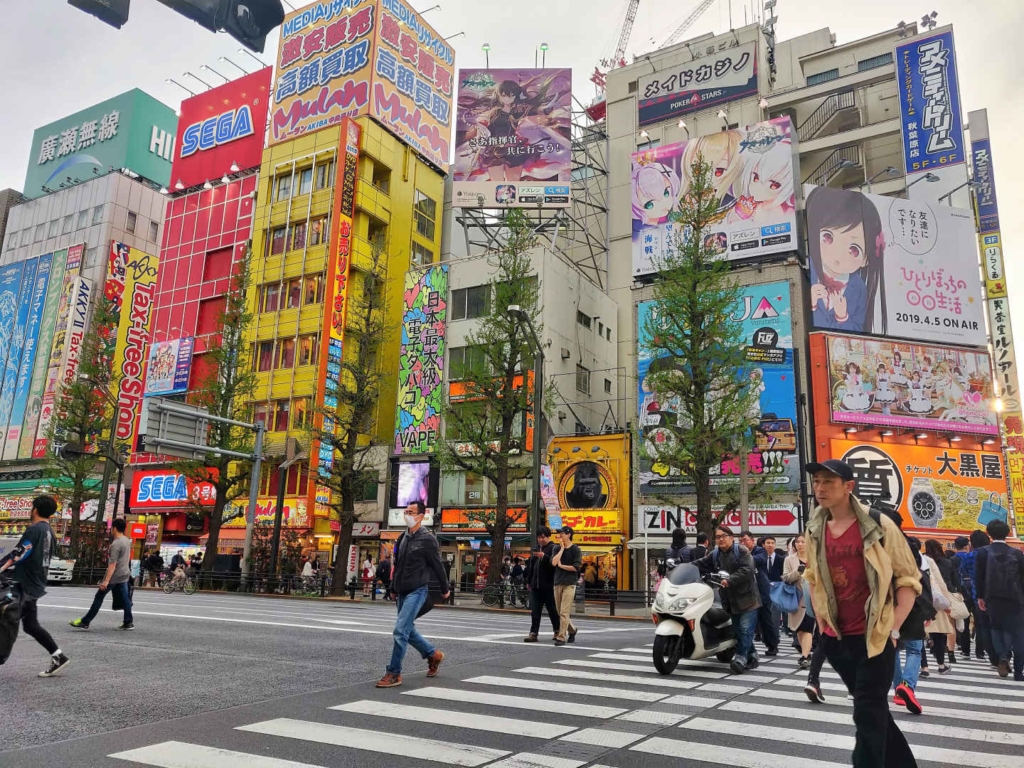
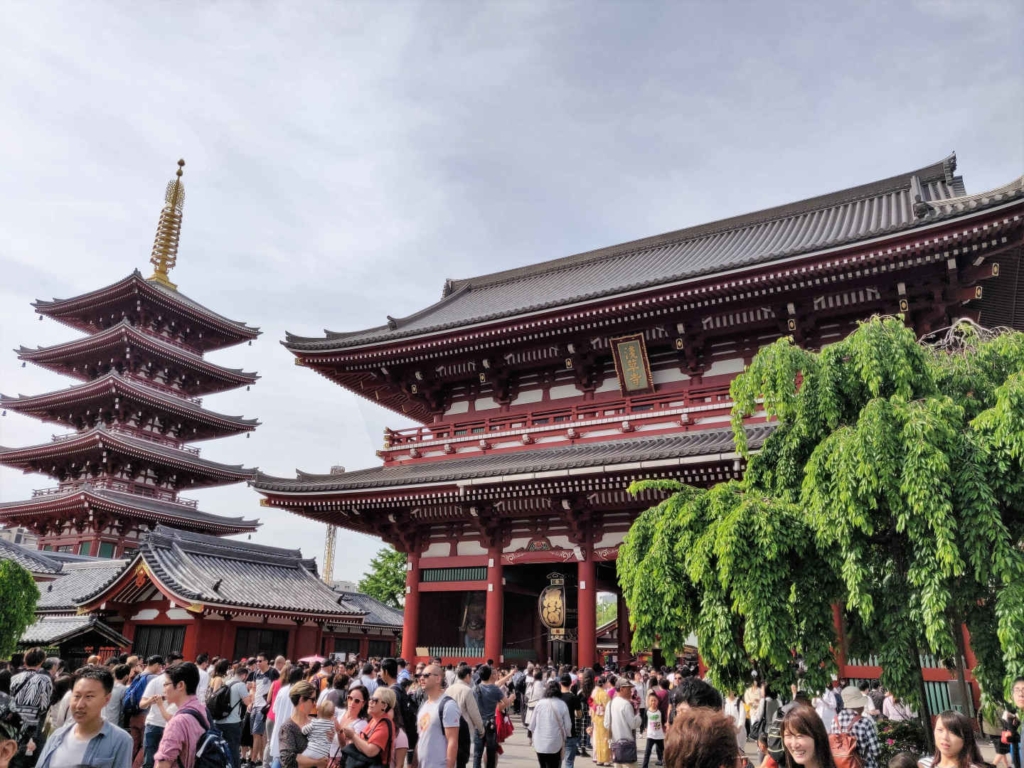
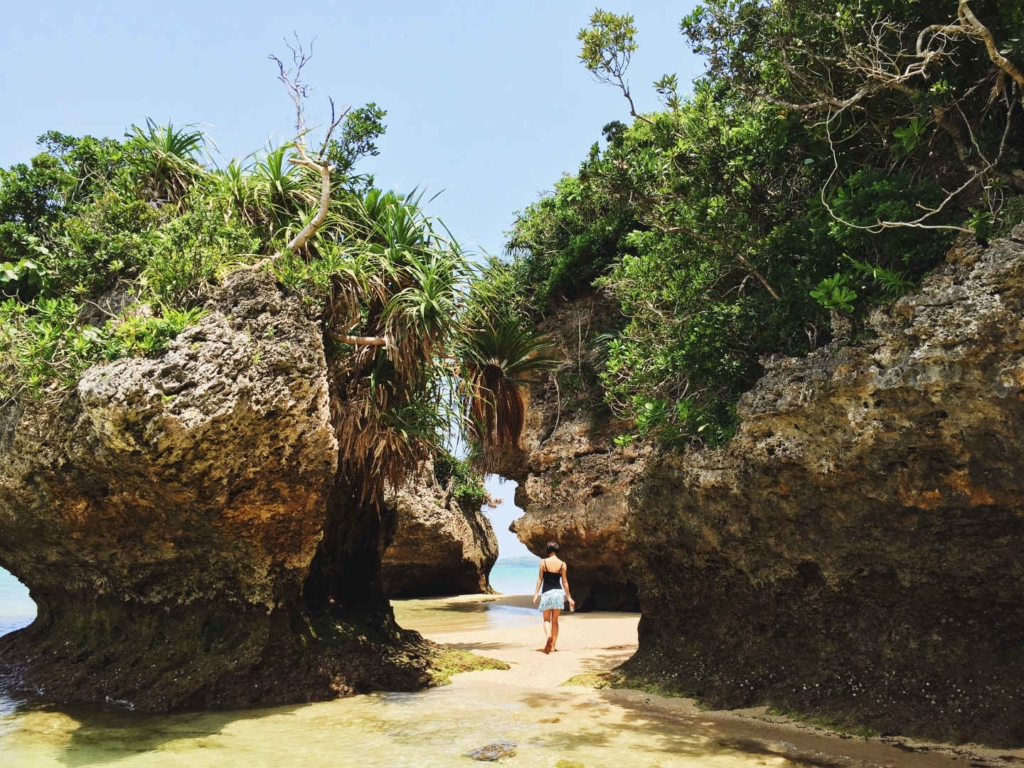
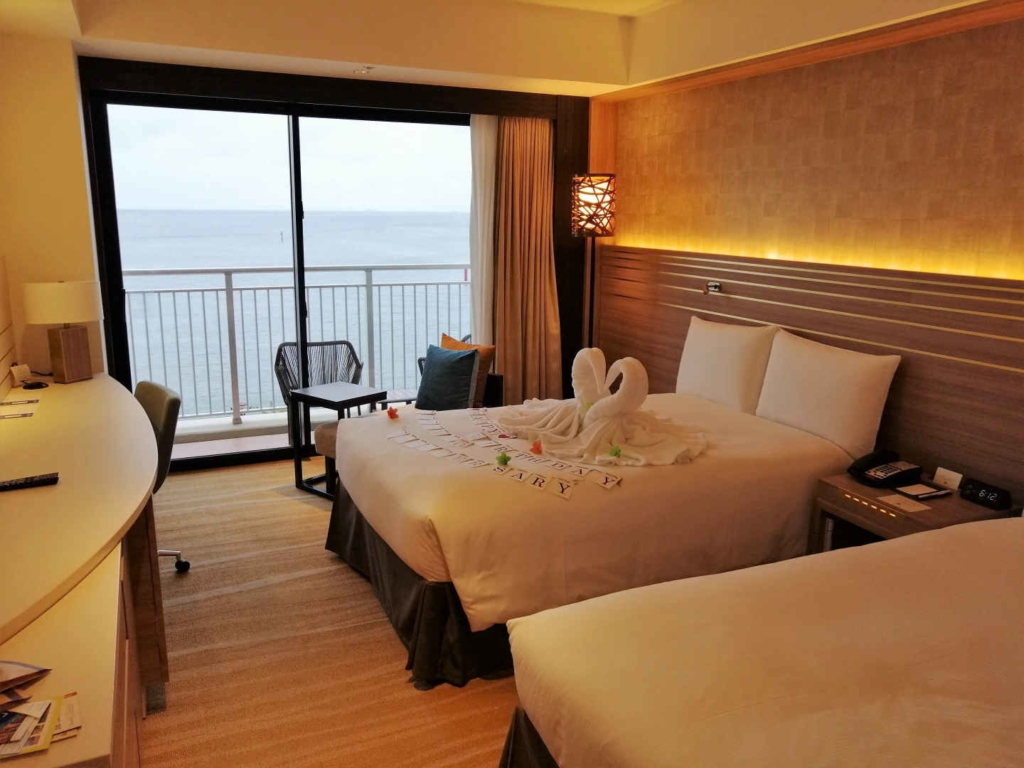
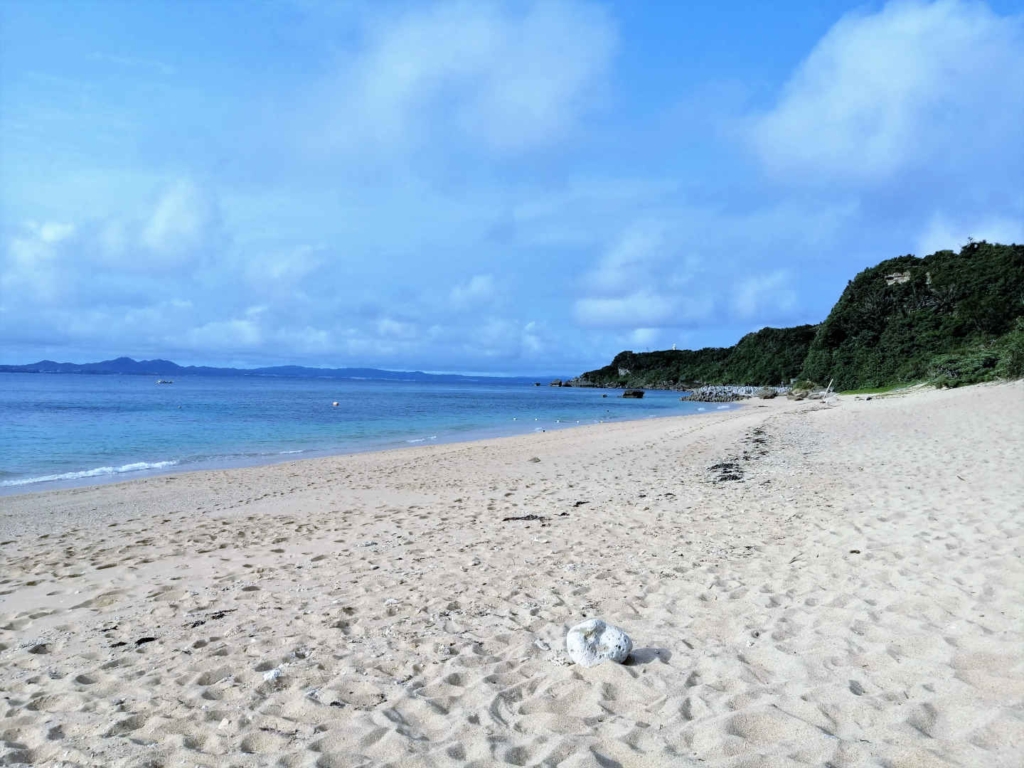
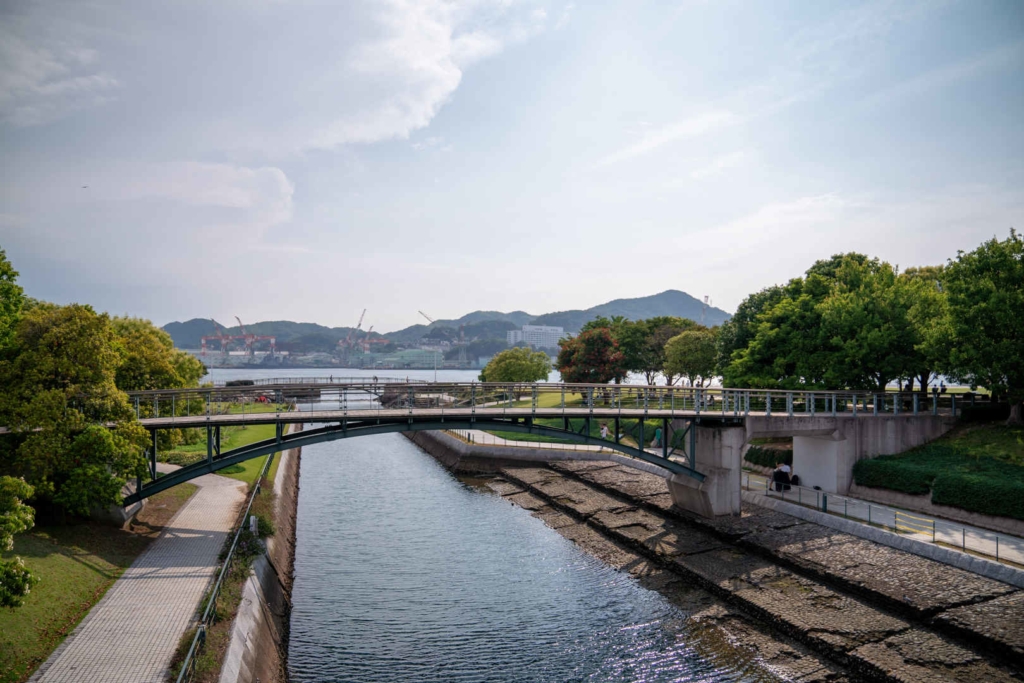
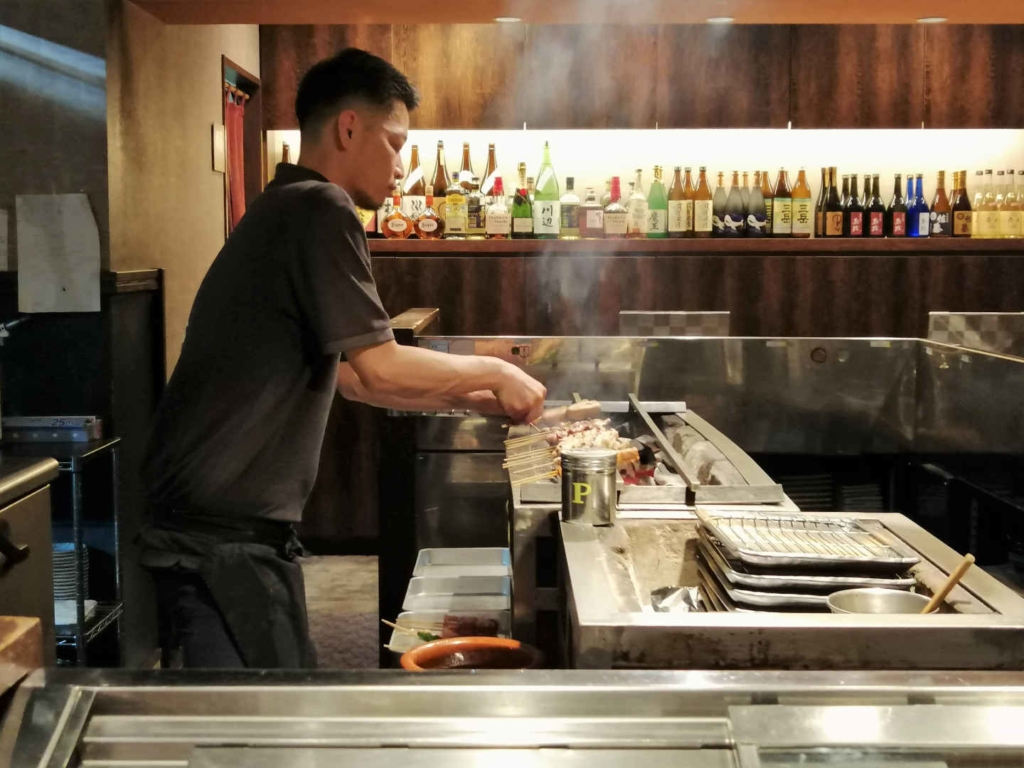
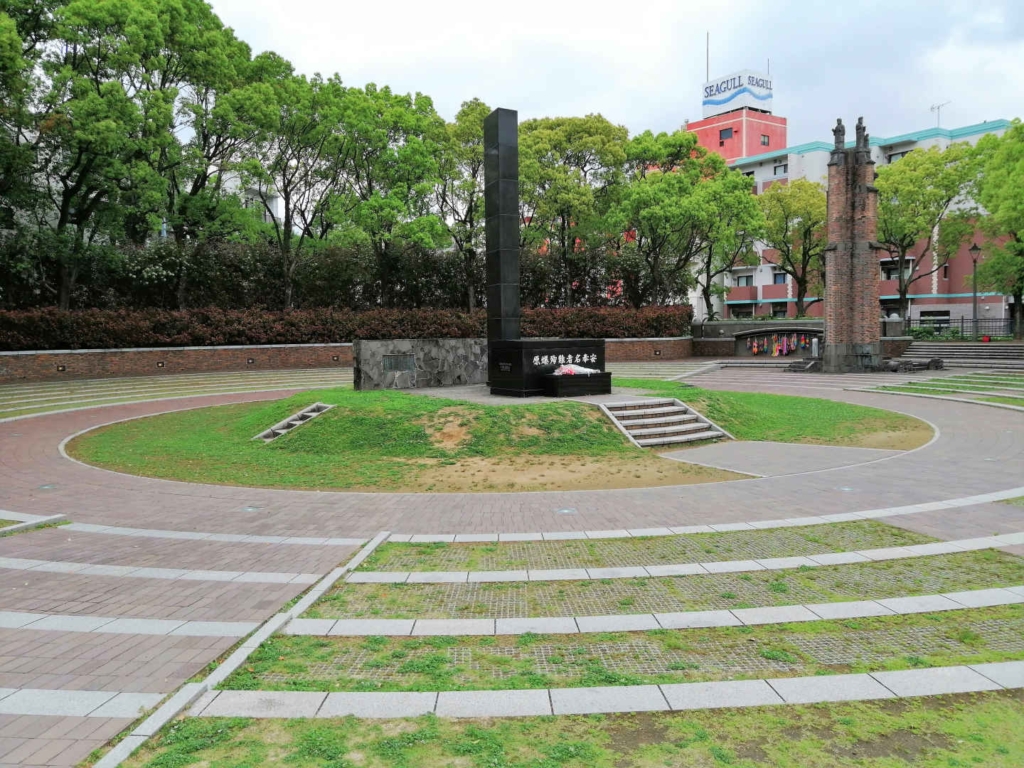
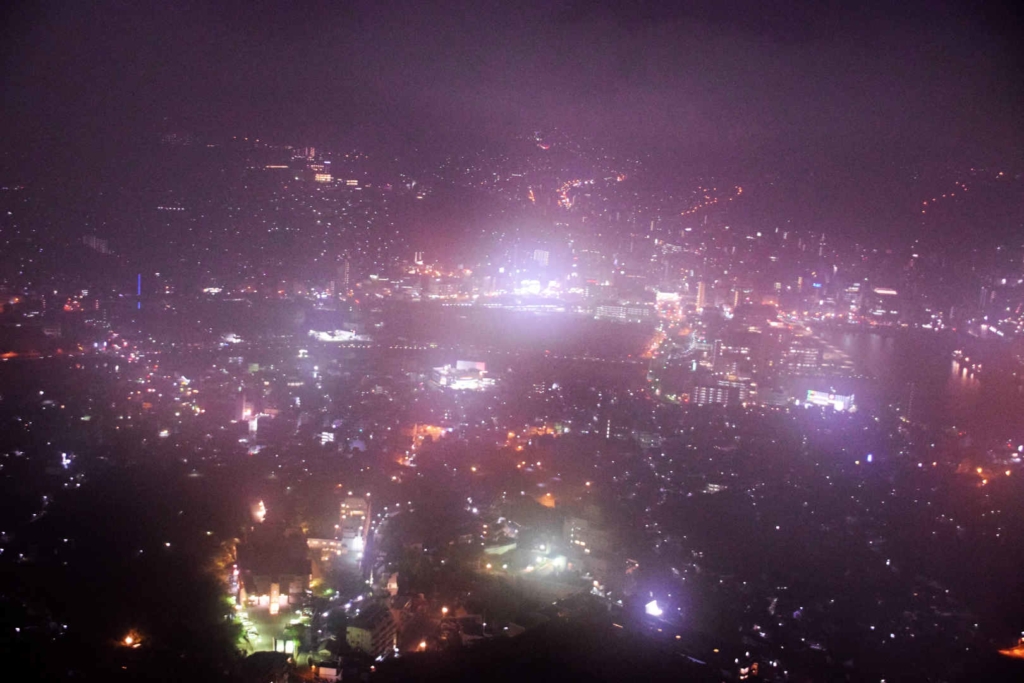
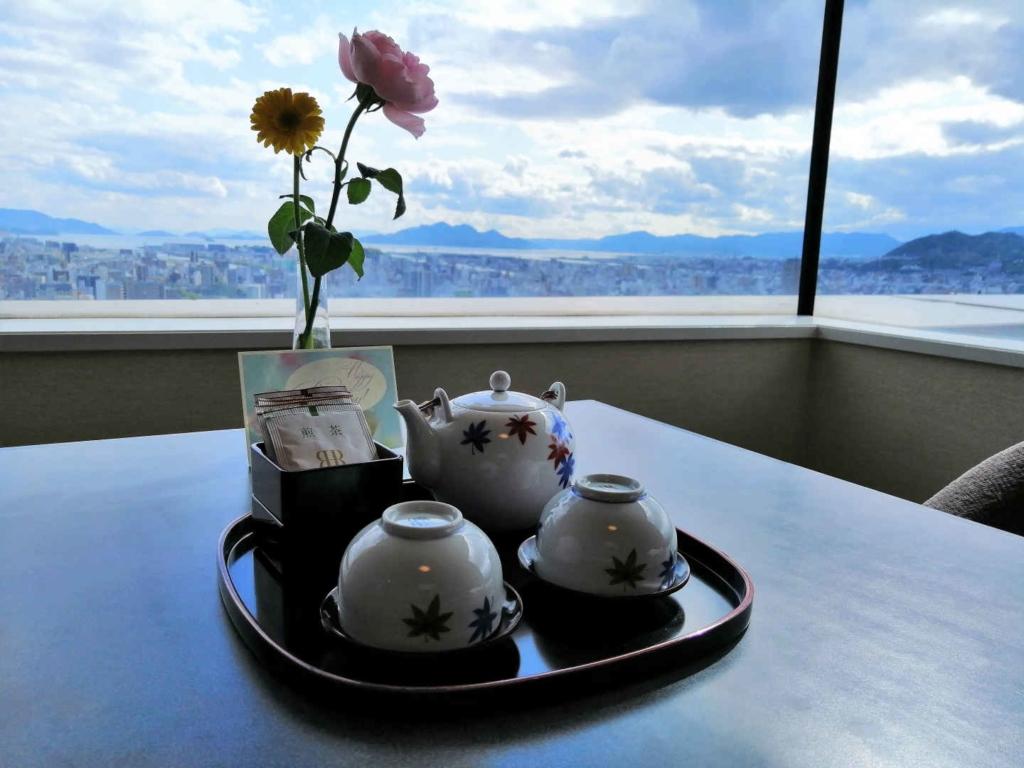
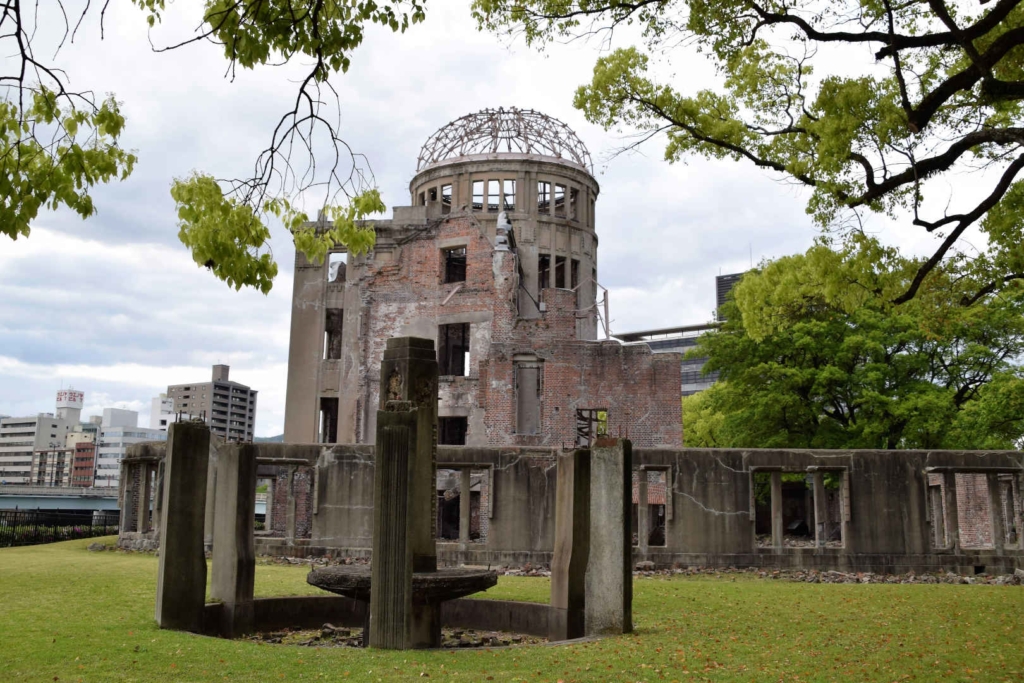
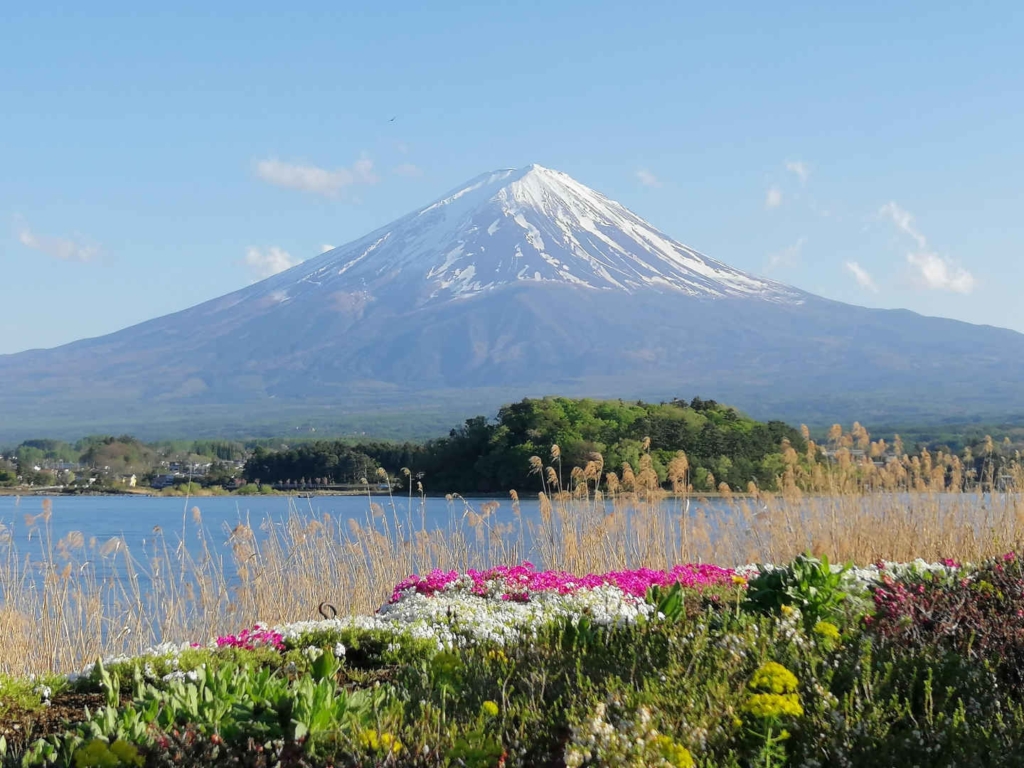
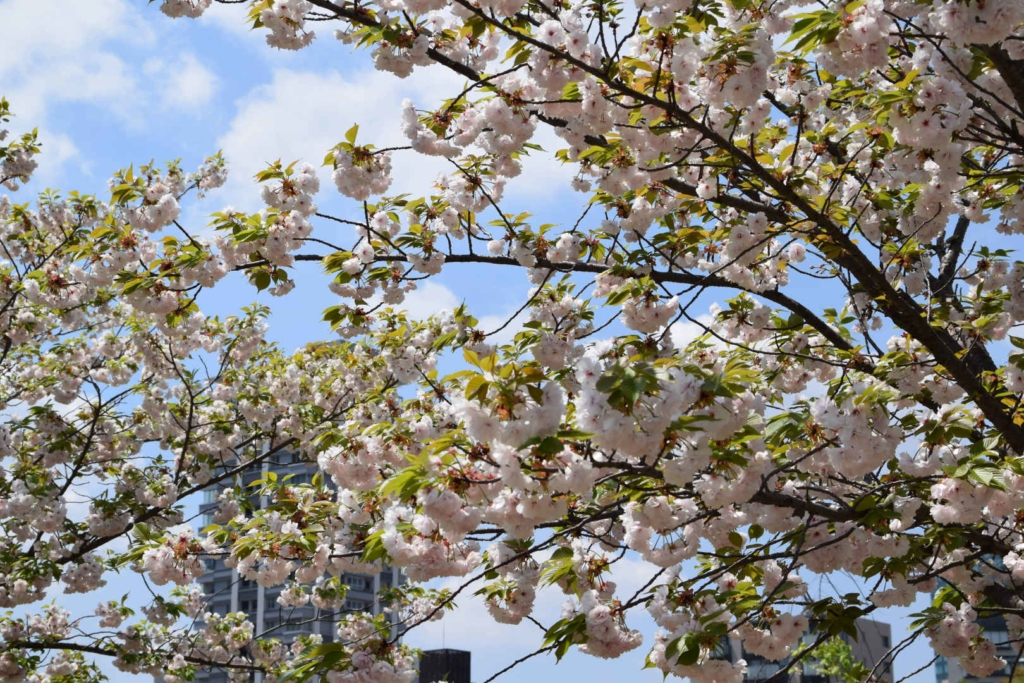
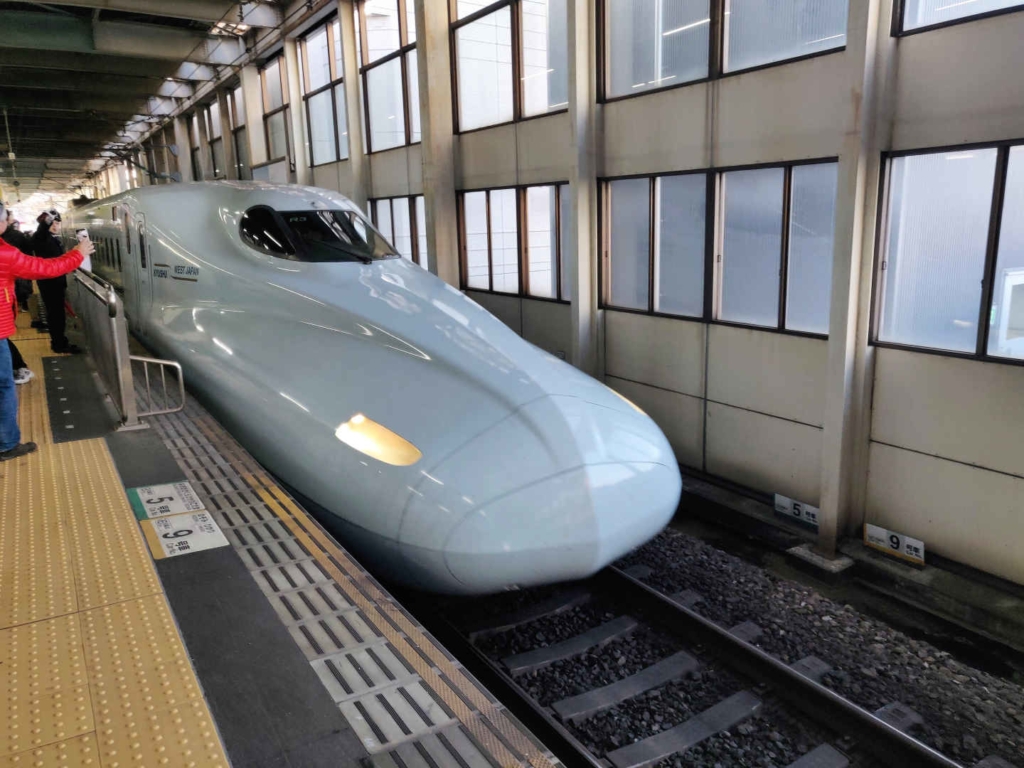

What would you skip for a two week itinerary? I thought Okinawa? And what else?
Hi Dirk, yes, for a two week itinerary I would suggest leaving out Okinawa and Nagasaki. I hope you have an incredible trip to Japan!
How much did you pay in total for the whole trip?
Hi Jackie, thanks for your question. I have added a section to the article outlining the total cost for the trip and the breakdown by type of expenditure. I hope this helps!